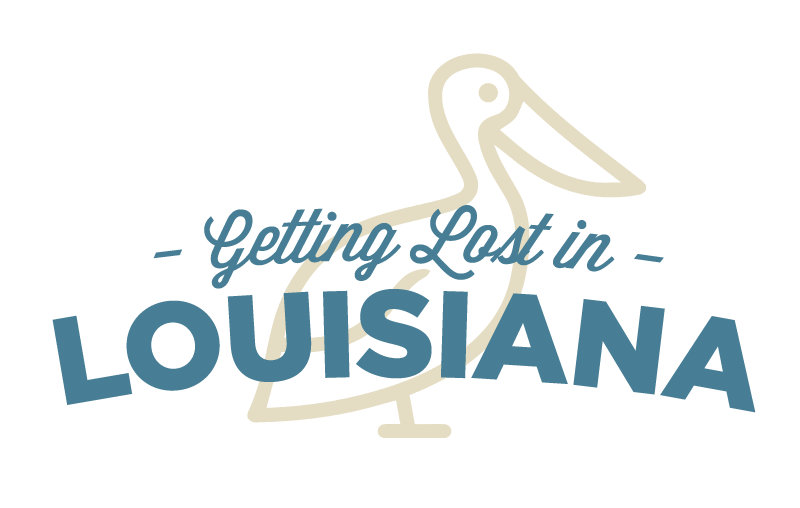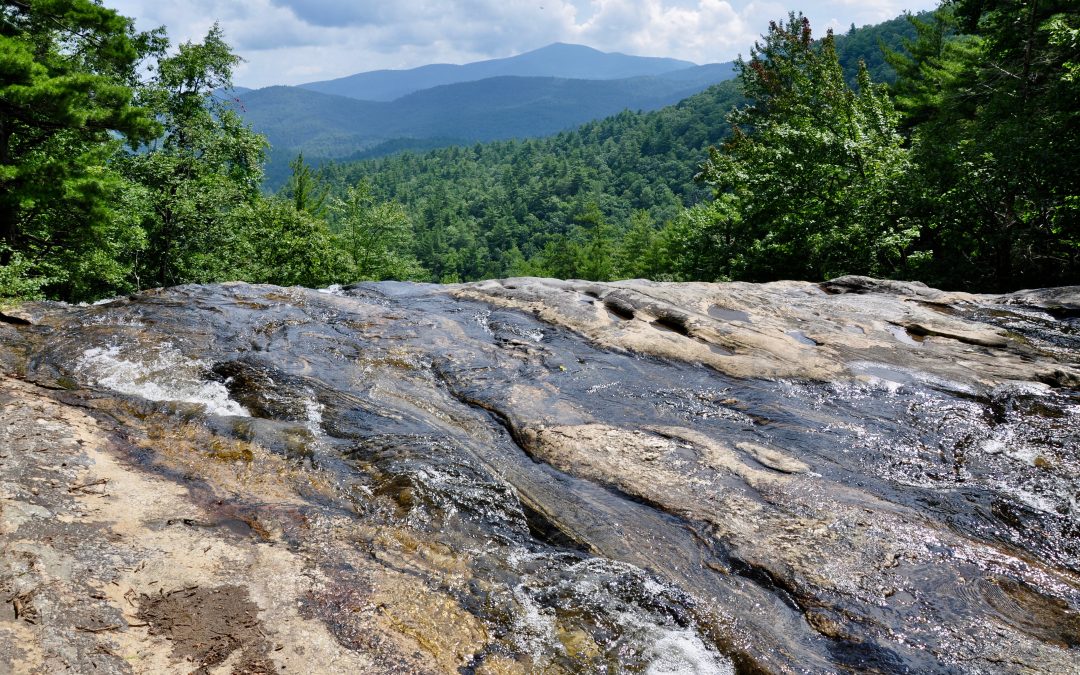
by Kristy Christiansen | Dec 6, 2019 | Beyond the State, North Carolina
We might be headed into winter, but with today’s 80 degree temperature in New Orleans, it reminds me of our late summer vacations to North Carolina. Nearly every August, we make a last ditch effort to escape the heat in Highlands, North Carolina. Just over the border from Georgia, Highlands is right at 9 hours from New Orleans. And at an elevation of 4,117 feet, the town is always a good 20 degrees cooler than home. Aside from the climate, Highlands is known for its proximity to waterfalls and hiking trails. (And upscale shopping and top-rated spas and restaurants, for those looking for a different type of vacation!)
We tend to go the outdoors route while in town, staying at an Airbnb on the outskirts of town and spending our days salamander hunting in streams. After years of visiting, we’ve perfected our itinerary to hit all of our favorite spots.
A Day in Highlands
Highlands Nature Center

One of our top choices in Highlands is the Nature Center and Botanical Garden. We normally head straight there on the morning of our first day. You can find it by following Main Street east until it turns into Horse Cove Road. The Nature Center features exhibits identifying local animals – both alive (such as the turtles and snakes in aquariums) and stuffed (a wall of birds and a black bear). It’s a good place to learn how to find salamanders and how to identify the area’s wide-ranging rocks and gems.

Once you exit the back of the Nature Center, you can pick up the trail in the Botanical Garden. The Wetland Zone brings you to a small lake with a boardwalk over a bog. Often, lily pads are blooming here and frogs can be heard (and sometimes seen). Our favorite trail follows a small creek through the Woodland Zone, ending at a waterfall perfectly sized for exploration. This is a hot spot for salamander hunting, as many of the amphibians can be found resting underneath rocks in the cold water.
Sunset Rock
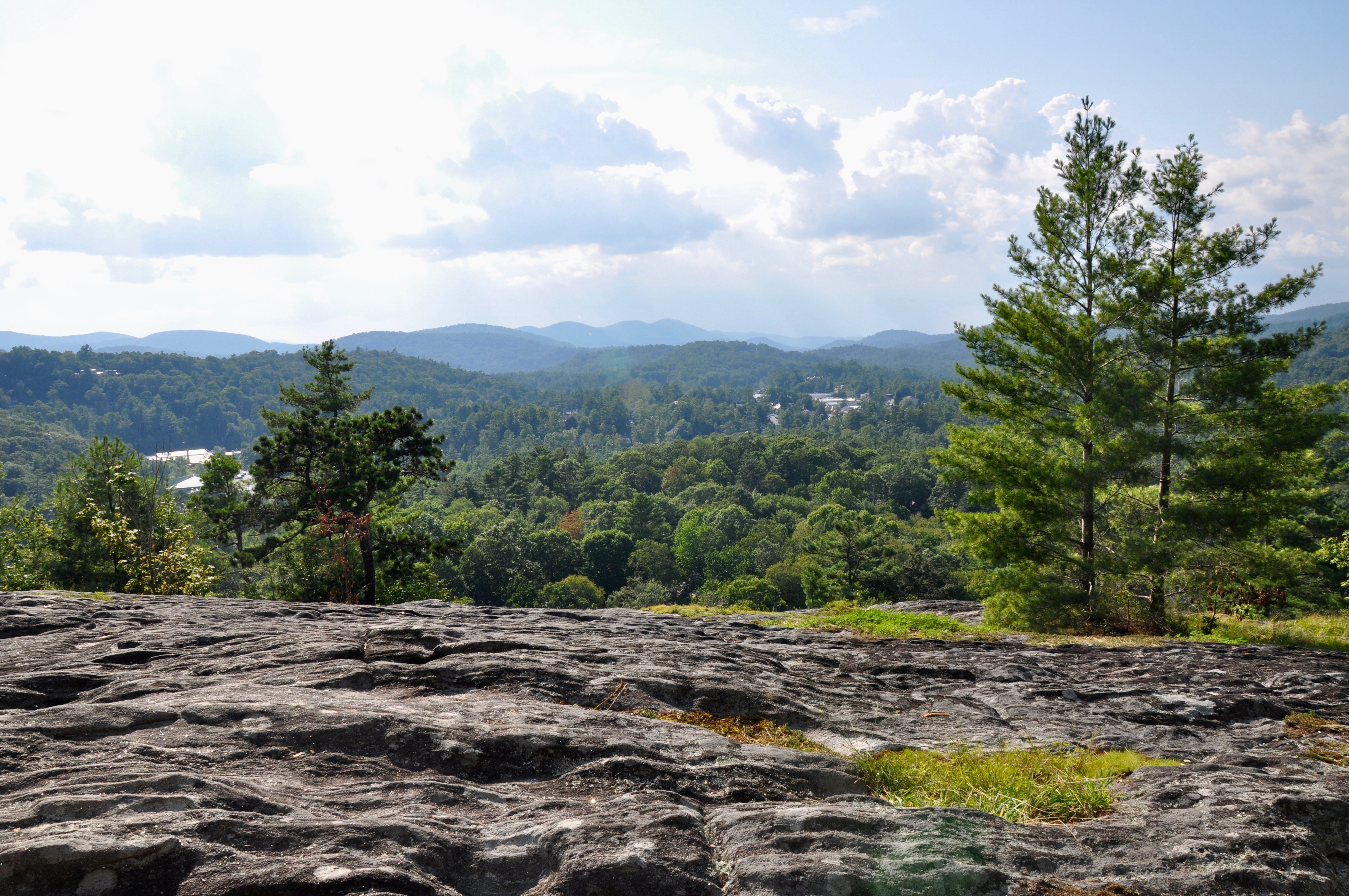
Offering beautiful views anytime of day, Sunset Rock is a must for any trip to Highlands. The road/trail begins across from the Nature Center. On our first few visits to Highlands, we would drive up to the top. There’s limited parking but we always managed to find a spot. This last year, however, deep ruts in the road made it nearly impassable by car. It’s a short, half-hour hike up, though, with parking at the base of the road.

You never know what to expect when you arrive at the top. One year, the entire area was lit by votive candles and we saw the sweetest wedding proposal take place. Another year, a mama bear and her two cubs wandered up the side of the mountain, straight up to a couple taking a nap on the rocky ledge. We all hightailed it off the mountain that day, with my youngest screaming, “We’re going to be eaten alive!”
Horse Cove Poplar Tree
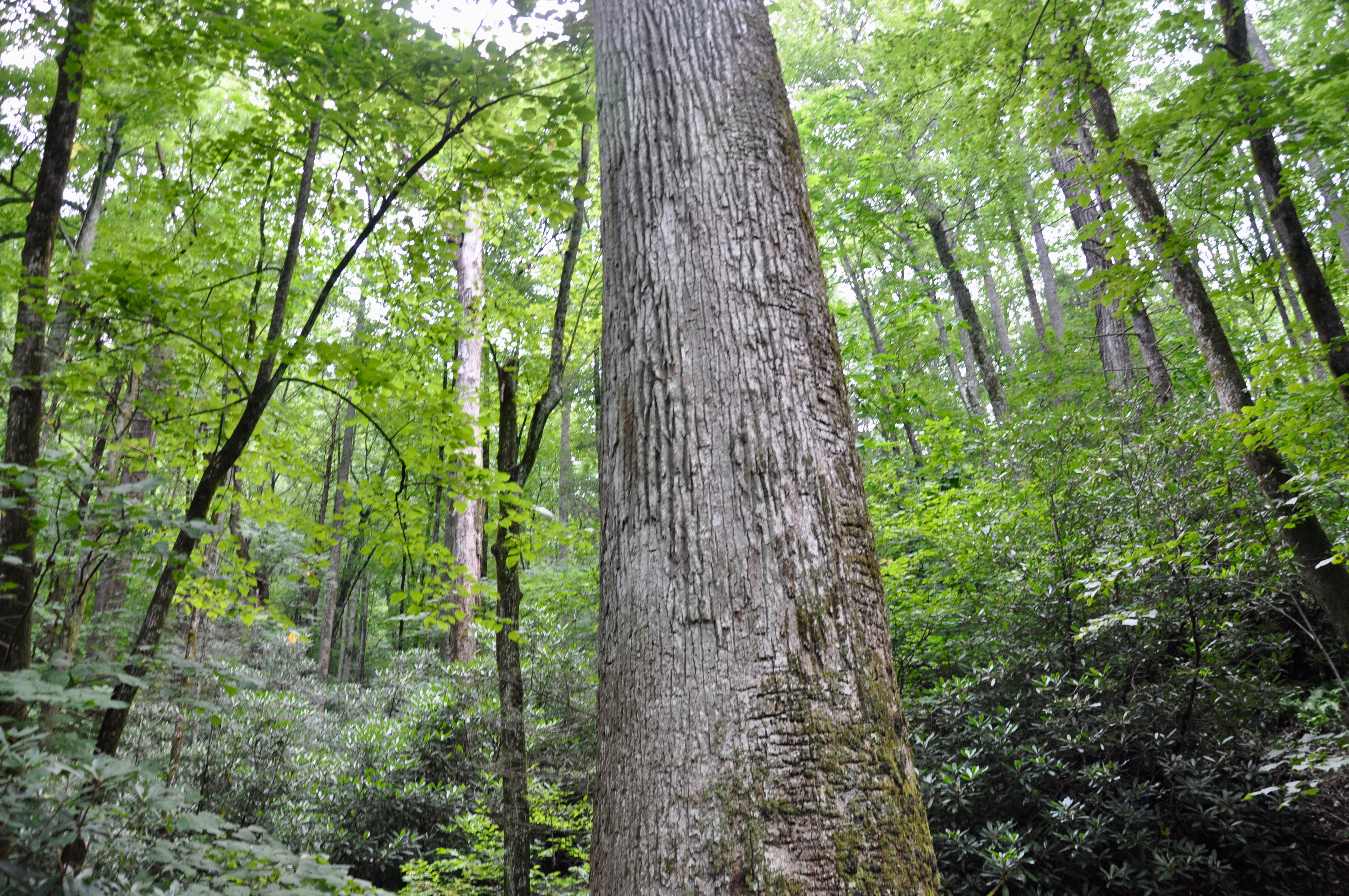
Continue out of town on Horse Cove Road, and after a series of hairpin turns, you’ll get to Rich Gap Road on your right. About 200 feet up Rich Gap, you’ll see a sign on your left and a trail to your right leading to a giant poplar tree. The Bob Padgett Poplar Tree is around 400 years old and various accounts list it as the second or third largest poplar tree in the country.
In Town
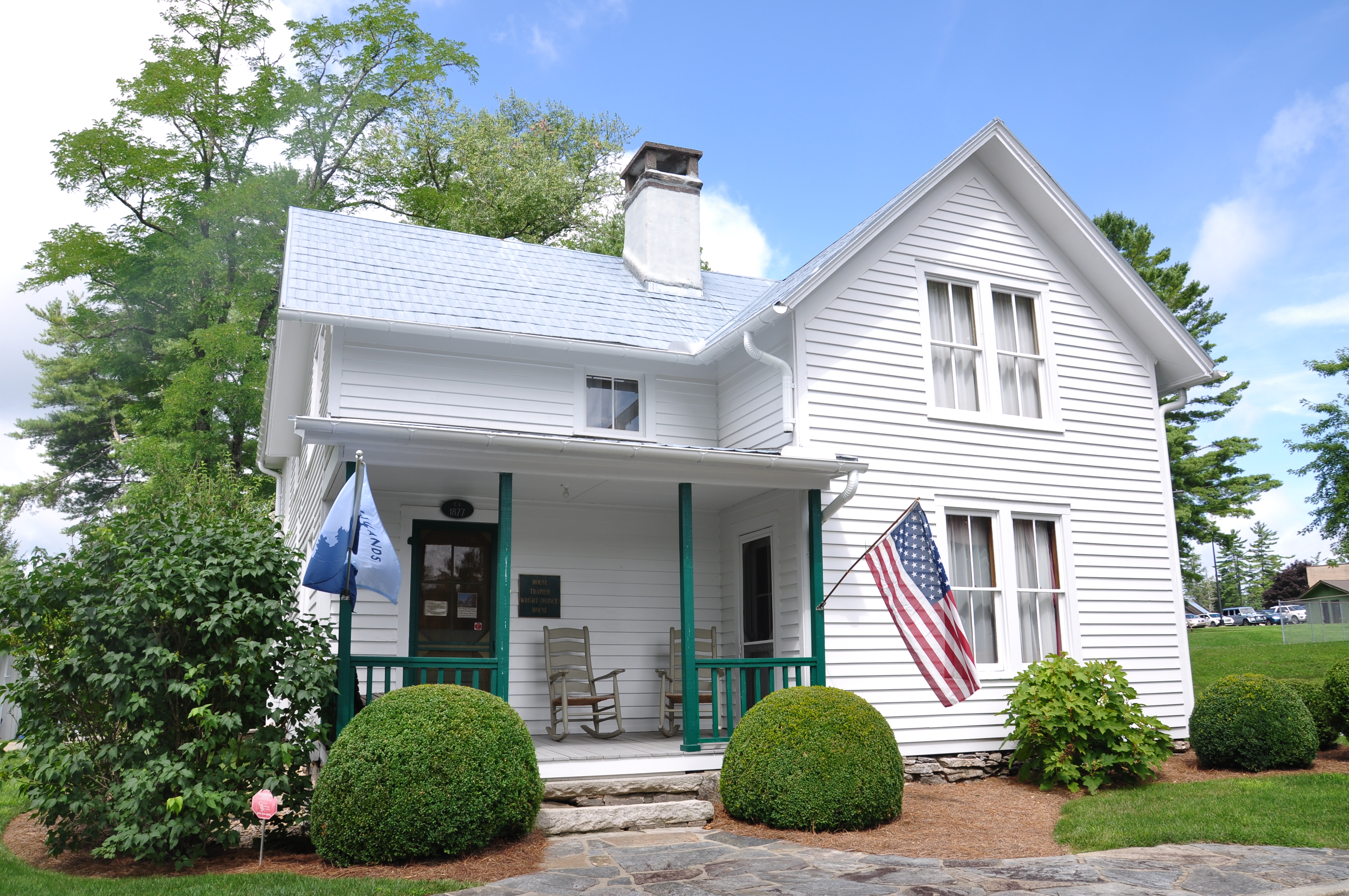
Back in town, we usually allot a few hours for visiting the Highlands Historical Society Museum and shopping at our favorite stores. We first stop by Calders Coffee Cafe for an iced coffee to go. Then we split up and conquer. Our top spots are Kilwins for fudge and chocolate goodies to bring home to family, the Spice and Tea Exchange for amazing smell discoveries (try the Emperor’s Chai), the Toy Store for loads of browsing and excruciating decision-making, Colonel Mustard’s for a tasting journey of a lifetime (no kids allowed though), Silver Eagle Gallery for megalodon teeth, the always enjoyable used bookstore The Bookworm, and Highlands Hiker for all the hiking materials you could ever want.
Eating
We tend to steer clear of restaurants, as our youngest has an aversion to sitting in a chair for more then 17 seconds at a time. But we have managed to try a few casual places in Highlands, such as the gourmet pizza at Mountain Fresh Grocery, The PIzza Place of Highlands (see a theme?), burgers from the Ugly Dog Pub (we get these to go and picnic by Harris Lake Park), and Mexican at El Manzanillo (although I have to say it drives me crazy that Restaurant is misspelled on their sign!). More often than not, though, we stop by Bryson’s Food Store, Dusty’s Rhodes Superette, and August Produce to pick up groceries to cook back at our Airbnb.
East to Cashiers
Whiteside Mountain
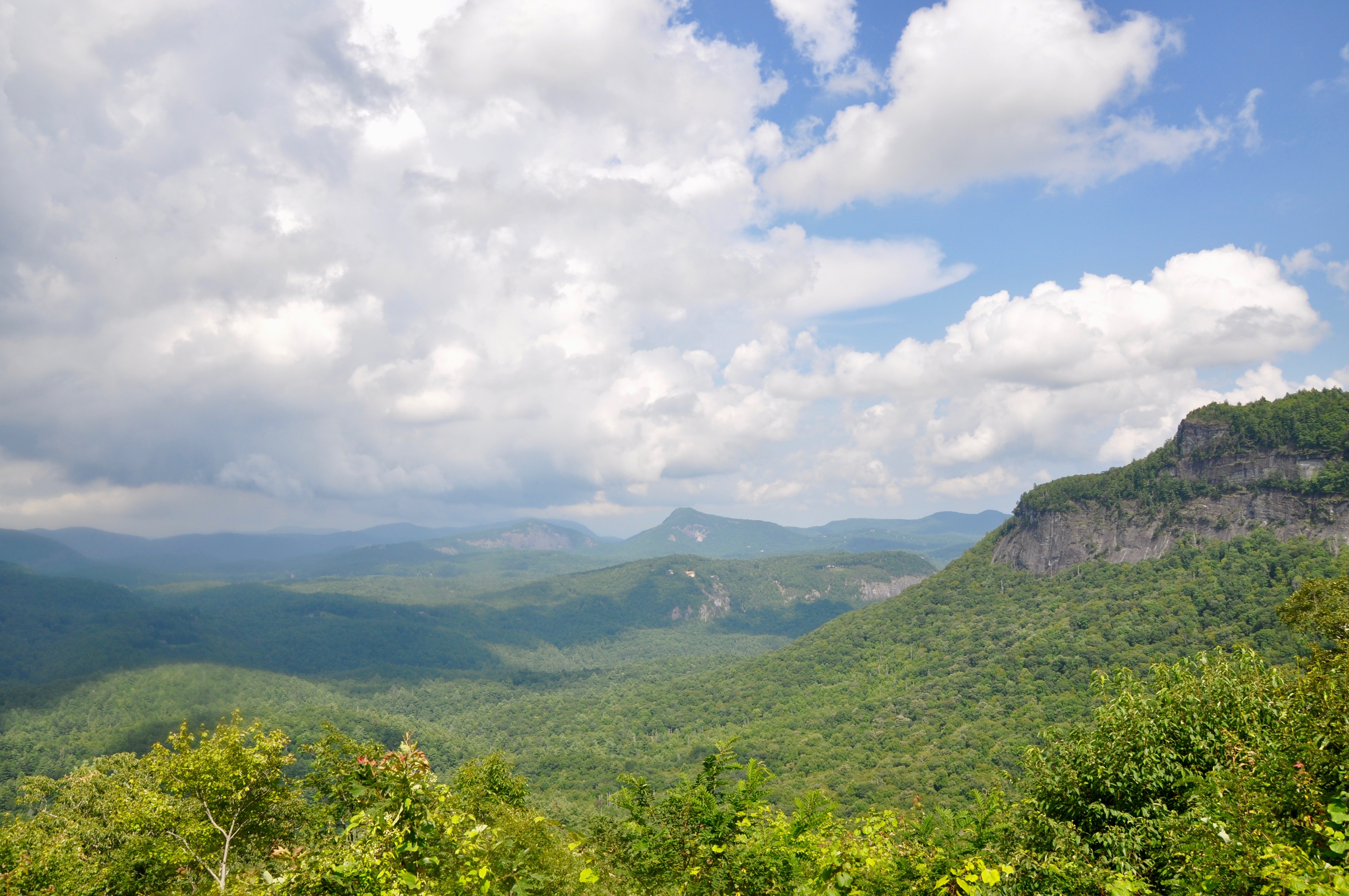
Take U.S. 64 east to head to the nearby artsy town of Cashiers. Along the way, look for signs for Whiteside Mountain. It’s a steep, two-mile loop with some gorgeous views at the top. Peregrine falcons use the rock ledges for nesting sites, and you can sometimes see them flying about. There is also a nice viewpoint on Highway 64, but it’s best to stop on your way back from Cashiers as the pull-off is more easily accessible then.
Silver Run Falls

One of our favorite waterfalls, Silver Run Falls is south of Cashiers on NC-107. A short hike leads to the 25-foot tall waterfall with a bone-chilling swimming pool at its base. The boys have braved the chilly water, but I prefer to wade in the shallow edges or sun on one of the large rocks. We always find salamanders here in the cliff face near the falls, and on nearly every trip, we’ve located at least one snake curled up in the sun or slithering across the creek flowing away from the pool. There are even small crawfish lurking in the sand if you look hard enough to find them.
Whitewater Falls
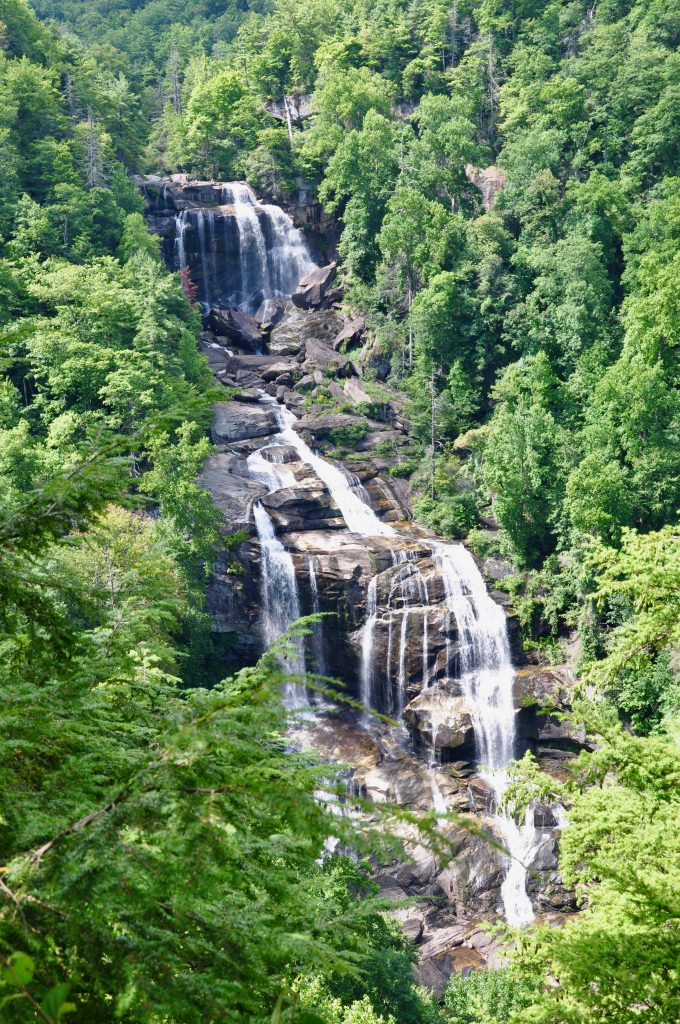
Continue south on NC-107 and enter South Carolina before turning back north to reach Whitewater Falls. Watch the signs as it can be tricky finding where to turn once in South Carolina. Dropping 811 feet, Whitewater Falls is the highest waterfall east of the Rockies. A 1/4-mile walkway leads to a view of the upper falls, while the lower falls can be accessed via a steep, half-mile trail. If you have some extra time in the day, you might want to visit the Walhalla State Fish Hatchery in South Carolina. The boys love to feed the fish and watch them jump and vie for the food, so we always try to squeeze in a fish hatchery wherever we go.
Lake Glenville
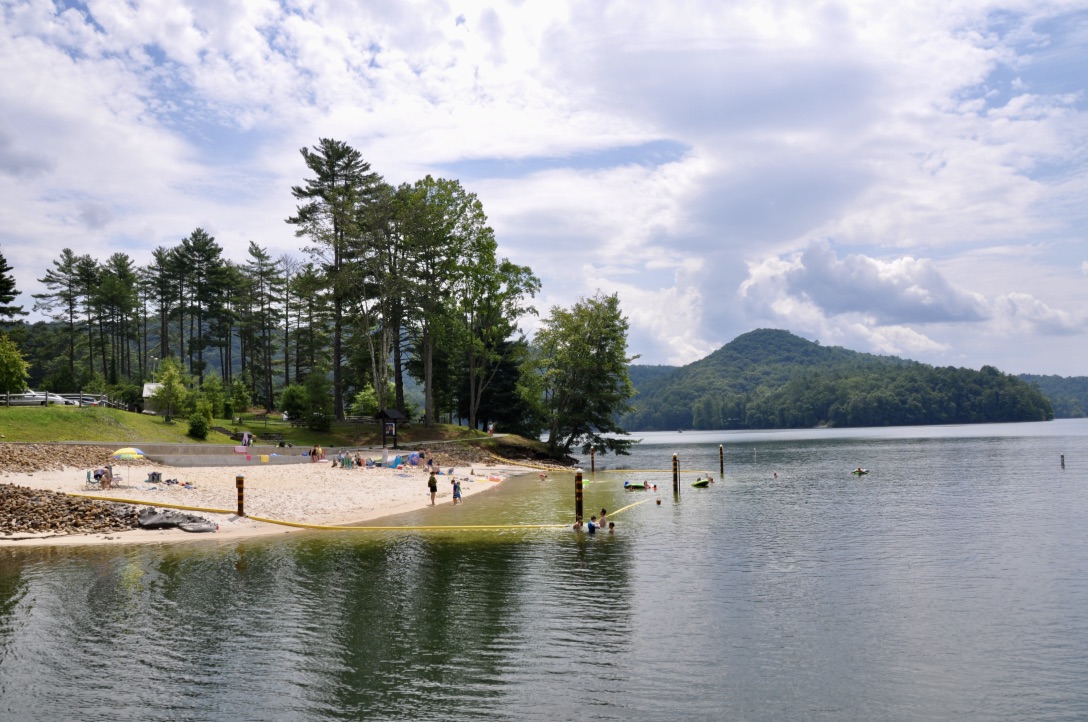
North of Cashiers on NC-107 brings you past Lake Glenville. It’s one of the few places you’ll find warm water to swim in. We like to stop at the Pines Recreation Area at the north side of the reservoir. Here, we can swim in a shallow swimming area, fish from the fishing pier and enjoy a nice picnic.
High Falls
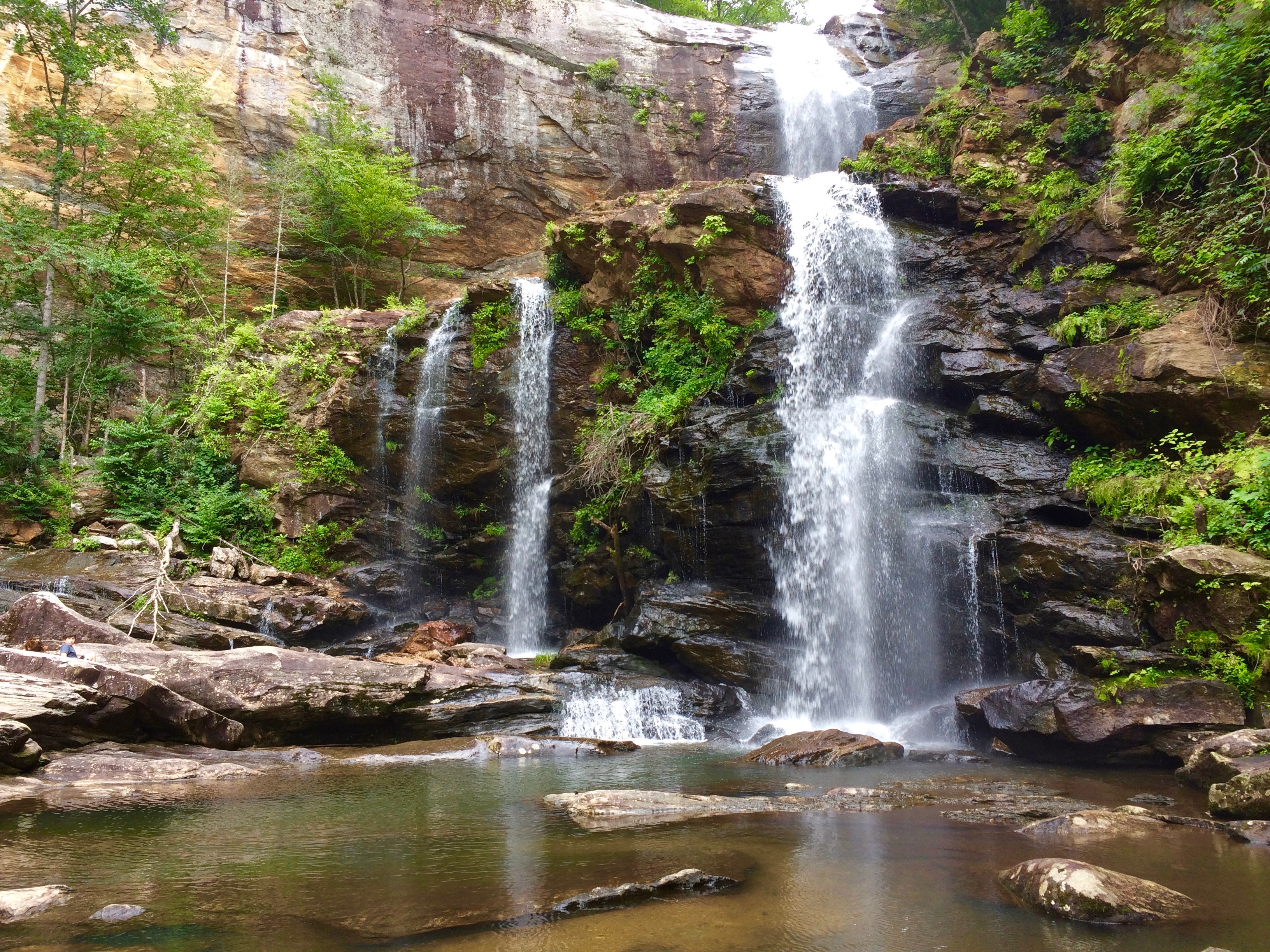
Across the street from the Pines Recreation Area is a parking lot by the trailhead for High Falls. The 3/4-mile trail down countless stairs is not too bad, but be prepared for some strenuous hiking going back up. The view at the bottom is well worth the hike, though, and there are plenty of large rocks to climb around on. A few days a year, Duke Energy opens the dam to allow more water to flow over the waterfall. It becomes a rushing river down below, giving whitewater kayakers a rare treat.
Northwest to Franklin
If you take Highway 64 west, you’ll have a leisurely drive from Highlands to Franklin. The town of Franklin is known for gem mining and features a Gem & Mineral Museum (as well as a Scottish Tartans Museum!). There’s also an Indian Mound right off Main Street. The drive from Highlands to Franklin runs along the Cullasaja River for much of the way and offers several spots to pull over and view the area’s beauty.
Sequoyah Falls
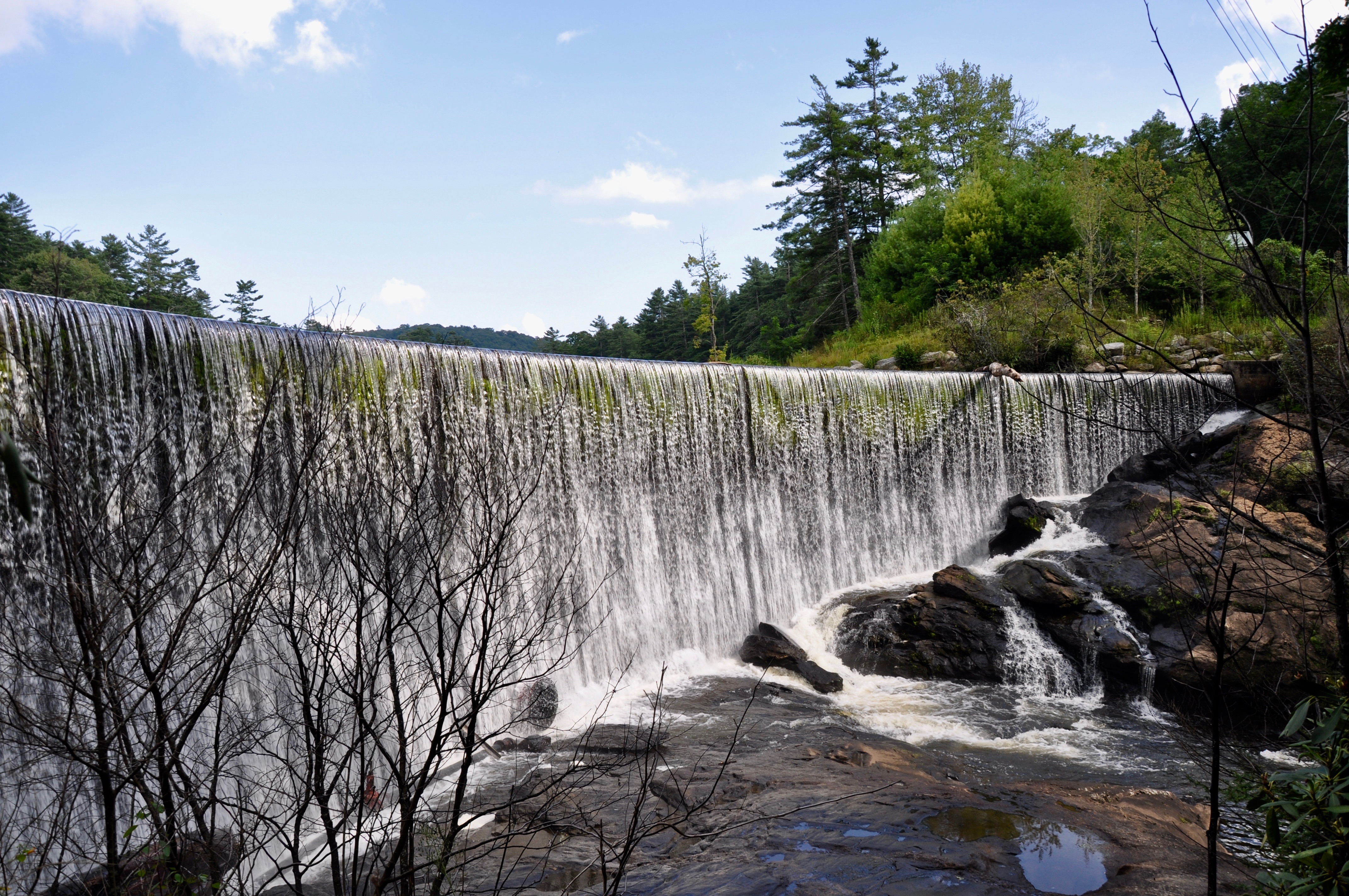
Lake Sequoyah Falls is more of an overflow from a dam than actual falls, but it’s still a nice site to stop and take a photo of. It’s right on the edge of HIghland’s city limits, so if you’re heading out of town, you’ll need to look back to spot it. Shortly past Lake Sequoyah, you’ll come to Bridal Veil Falls on your right. At one time, cars were allowed to drive underneath the roadside attraction, but now you need to park and walk over to it.
Dry Falls
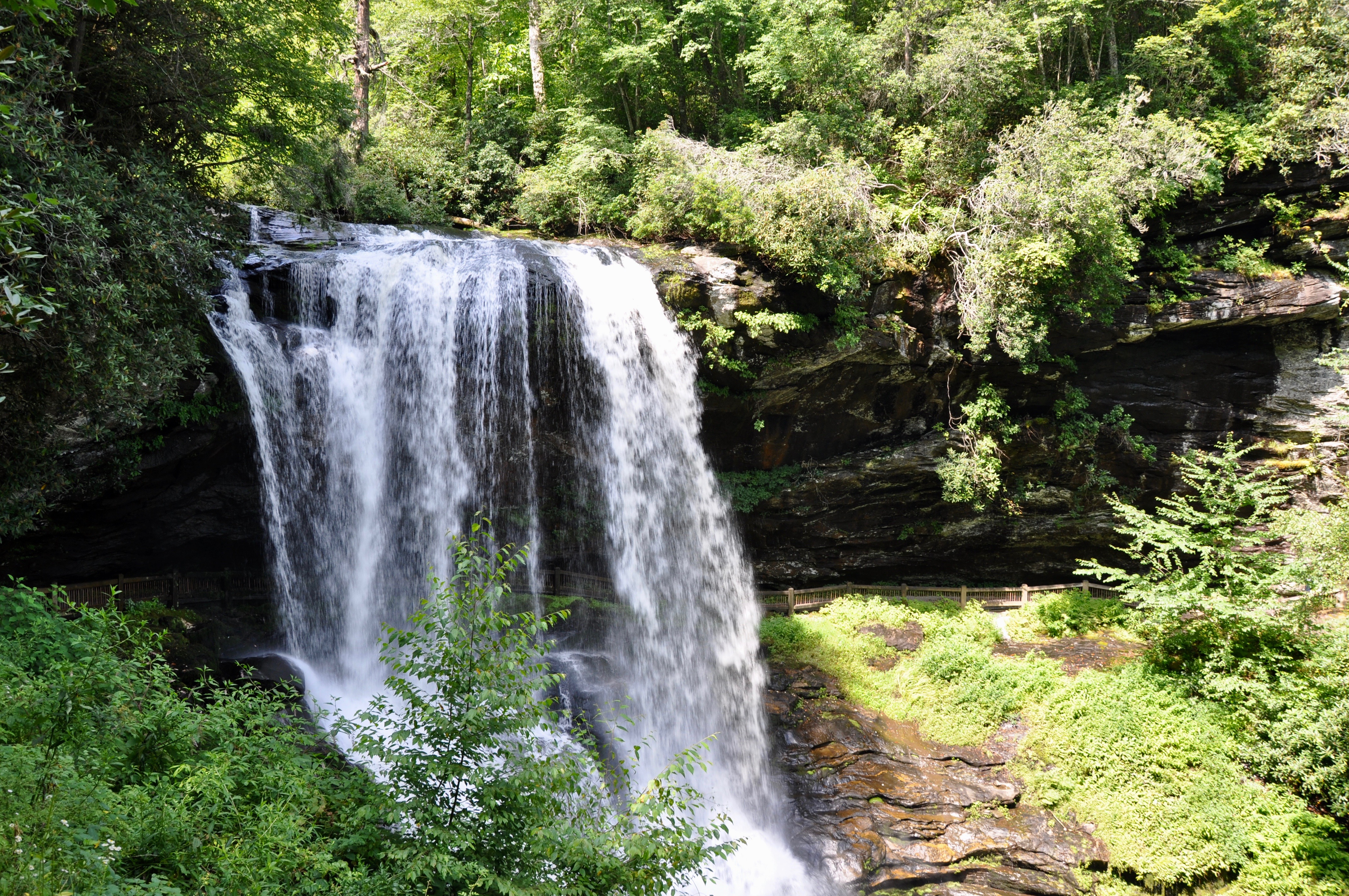
The next pullover (on your left) will be for Dry Falls. As you walk down the path, you’ll hear the falls before you see them. They plummet 75 feet over the cliff. Take the walkway all the way around behind the falls, giving you a whole new perspective. Farther down the road, Bust Your Butt Falls is a local swimming hole where the bravest swimmers enjoy a very bumpy rock slide or jump off the cliff into the pool below. The hardest falls to spot is the Cullasaja Falls between Bust Your Butt Falls and the town of Franklin. It’s easier to see on your return trip from Franklin.
Southwest to Scaly Mountain
Glen Falls
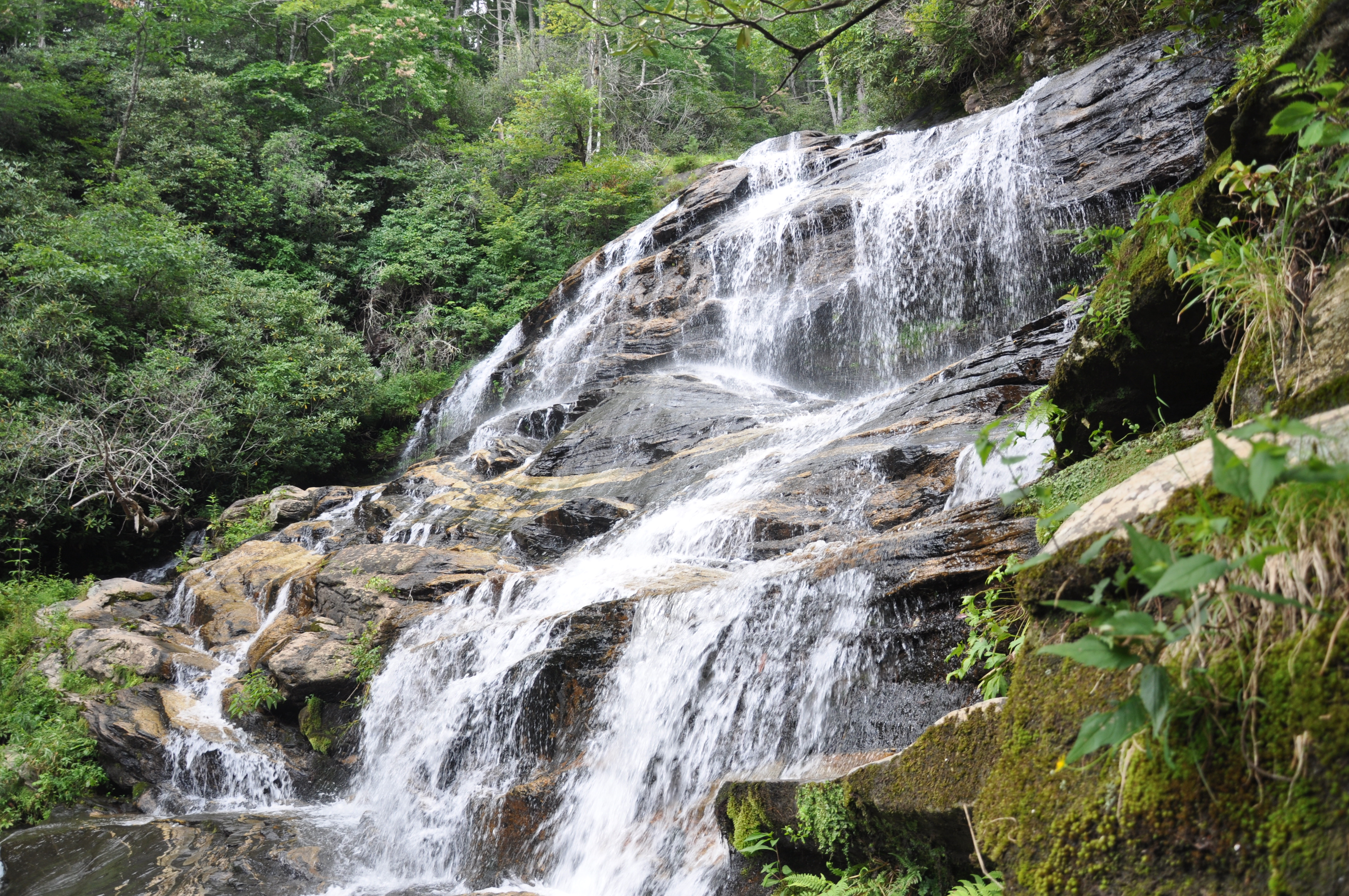
Water gushes down a series of three waterfalls at Glen Falls, with a trail leading to four viewpoints along the way. The hike down is easy, bringing you from the top of the waterfall to the base. The kids normally fly past the upper waterfall, taking a brief glance before make their way to the favorite middle waterfall. Here, we normally let them skirt the viewing deck and go exploring on the rocks. They stay close to the wall face where every tiny crevice seems to hide a salamander peeking out. The walk back up, though, always elicits quite a few groans. And we’re all a bit winded by the time we make it back to the car.
Scaly Mountain
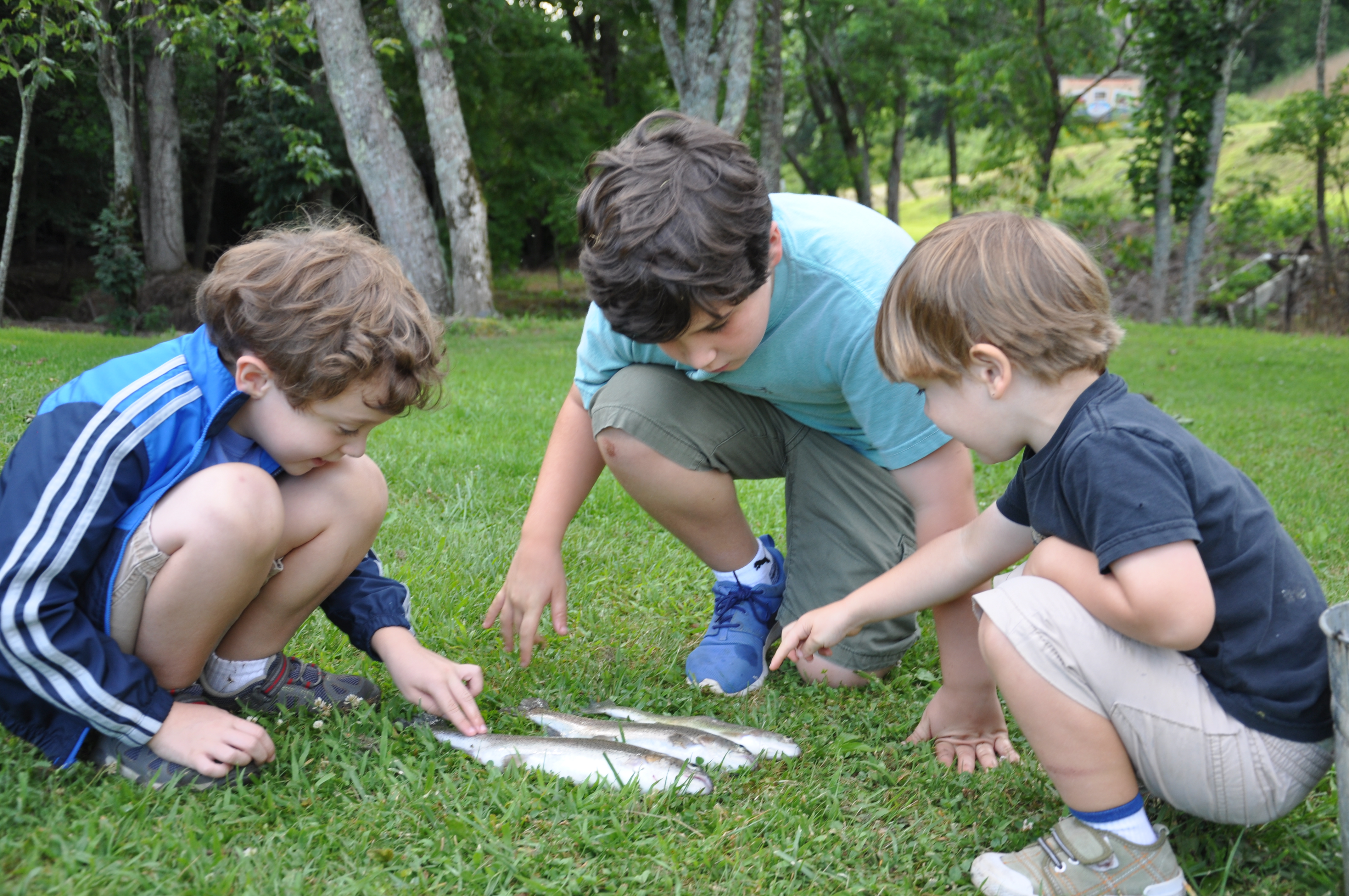
The trout pond at the Scaly Mountain Outdoor Center is generally on our itinerary each year when we travel to Highlands. It’s perfect for young kids without the patience to fish for hours, as you’re pretty much guaranteed to leave with as many trout as you want to pay to catch. They’ll even clean them for you there if you don’t want or have a place to do it yourself. While we go for the fishing, the main attraction at the Outdoor Center is the tubing, available in both summer and winter.
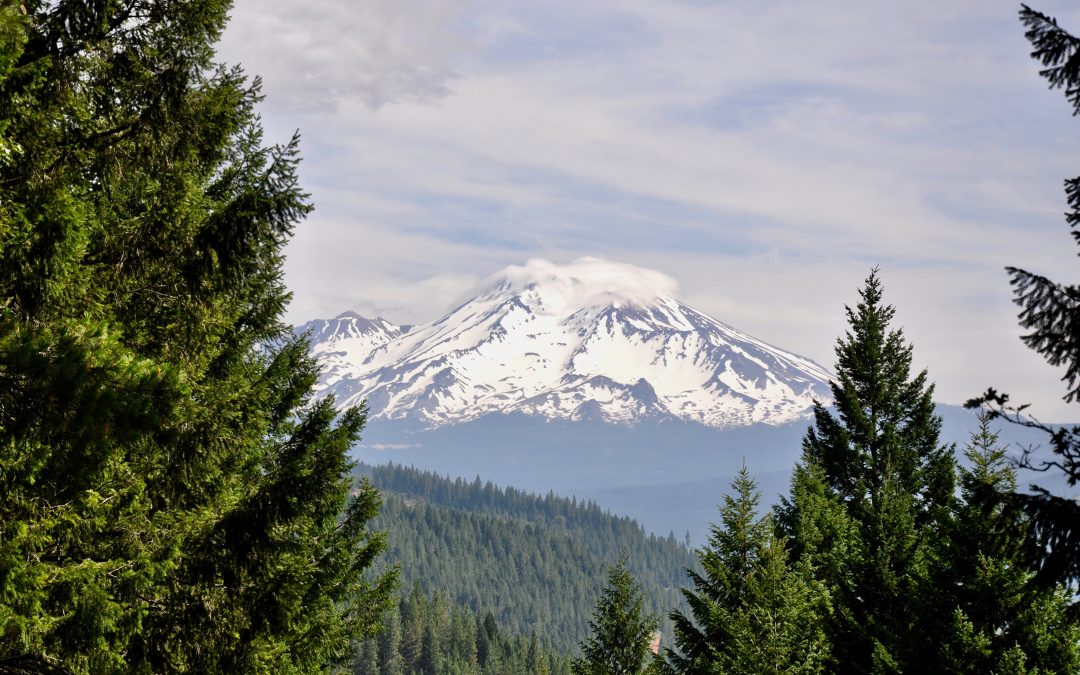
by Kristy Christiansen | Sep 18, 2019 | Beyond the State, California
For the last leg of our journey, we left the rugged, chilly coastline to venture east to northern California’s volcanoes. The two areas couldn’t have been more different than each other. And the four-hour drive between them was alternately wildly beautiful and utterly devastated.
Highway 299
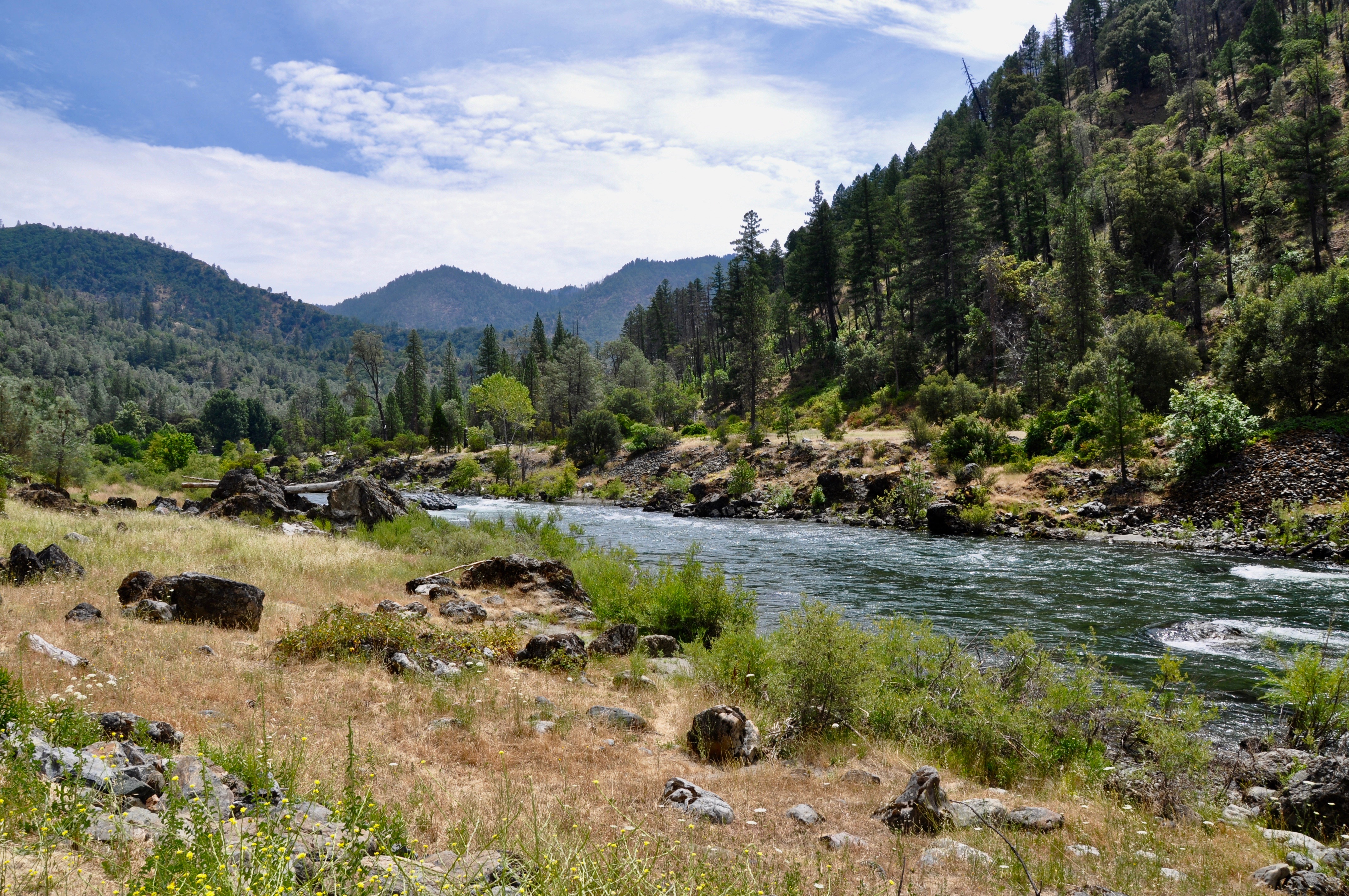
Highway 299 cuts its way east across the mountains, paralleling the scenic Trinity River for much of the route.The river is a great location for salmon and steelhead fishing. The drive itself is beautiful, some of it passing through a National Forest, with only a few towns popping up here and there. We picked up coffee in Big Bar at Strawhouse Coffee Shop then made a stop in Weaverville (pictured below) to tour the Jake Jackson Museum and get a peak at the Joss House Chinese Temple. We also popped into the Forest Service Ranger Station, where the kids loaded up on Smoky the Bear paraphernalia.

Once we passed Lewiston, the landscape changed to charred trees and bare mountains, evidence of the 2018 Carr Fire. Whiskeytown Lake National Recreation Area was at the heart of the fire, which began with a flat tire and a spark coming off the rim when it hit pavement. Nearly 93% of the park was burned and much of it remains closed today. We did find a nice trail down to the lake from the Visitor’s Center though. East of Whiskeytown, we came across Shasta State Historic Site, a ghost town from the days of the California Gold Rush.
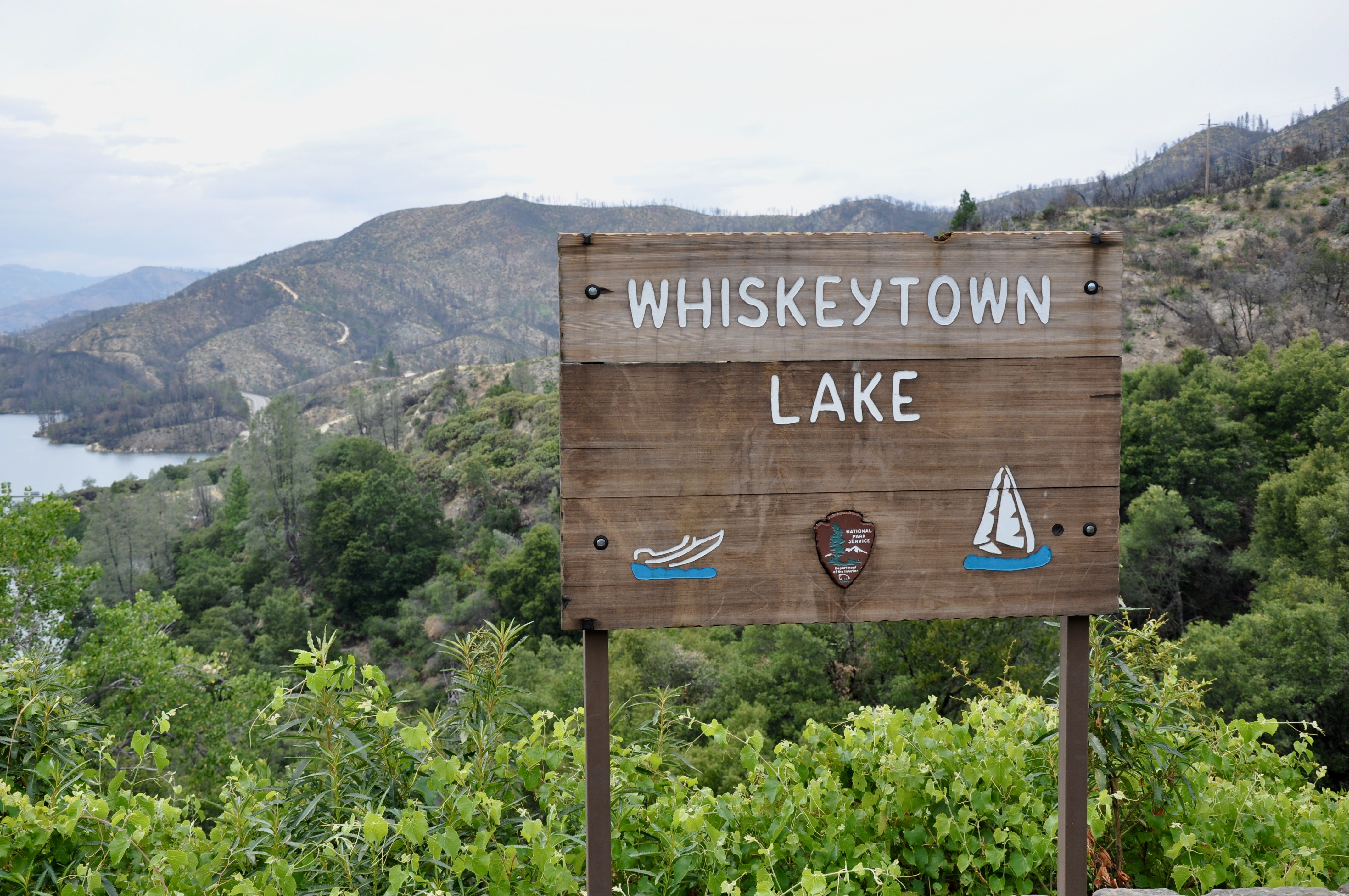
Ready to find our Airbnb in Dunsmuir, we didn’t have time to explore Redding. We did spy the famous Sundial Bridge from a distance, though. And we caught our first glimpse of Mt. Shasta after turning north on I-5. The impressive volcano dominated the horizon during our stay in the area.
Castle Crags State Park
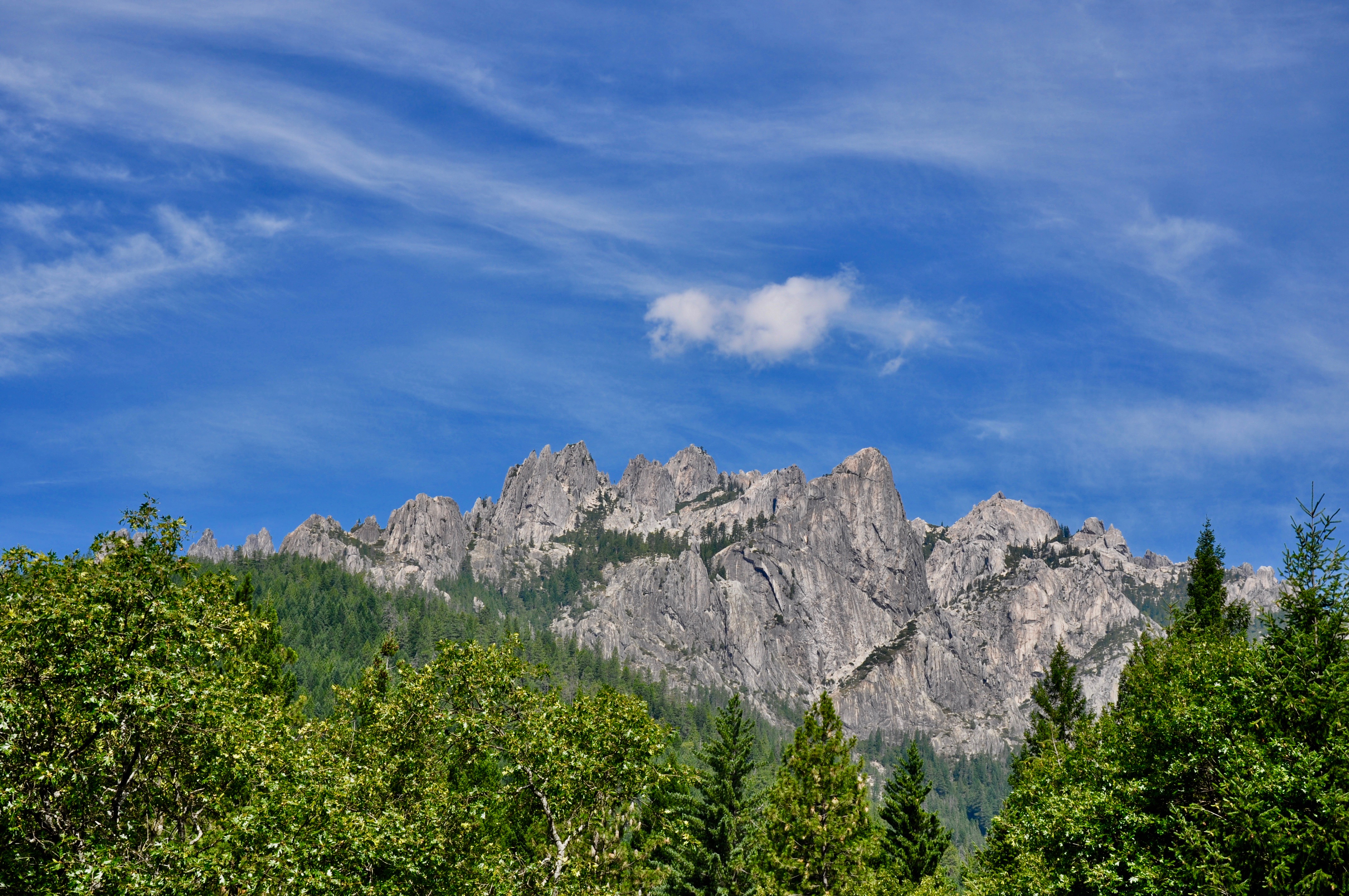
The granite outcroppings of Castle Crags State Park are just down the road from Dunsmuir. The 2,650-mile Pacific Crest Trail passes through the park, but we opted for the one-lane drive up followed by a short hike to the Vista Point. Afterwards, we went fishing in the Sacramento River, which flowed right beside the campground and the area’s natural mineral springs.
Mt. Shasta Fish Hatchery & Sisson Museum
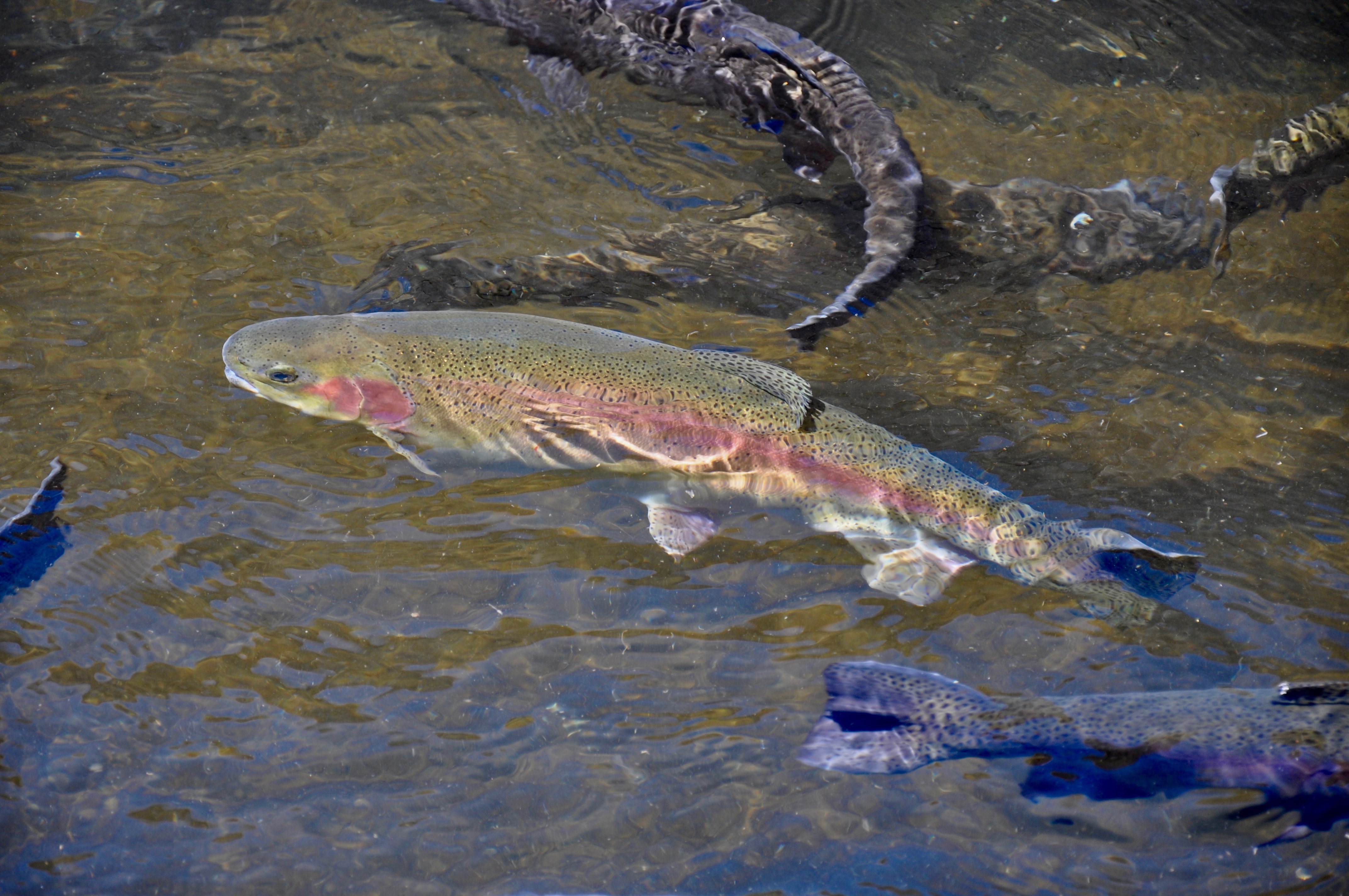
An unexpected highlight of our trip was the Mt. Shasta Fish Hatchery and Sisson Museum. The trout hatchery is the oldest west of the Mississippi and features rows of ponds with varying sizes of fish. Here you can grab a handful of food and watch the trout churn up the water while vying to catch some dinner. The Museum was a wealth of information on the town of Mt. Shasta, the volcano, the railroad and pretty much anything else in the area. But the best part was the multiple play options for kids. They could climb aboard an old fire truck using the hoses to put out fires, crawl through tunnels, play dress up in an old cabin, watch the model trains or spend hours in the kids’ playroom. It’s the one spot our five-year-old begged to return to again and again.
Mt. Shasta

Our journey was always leading us to Mt. Shasta itself. The volcano rises to 14,179 feet and boasts seven named glaciers. We drove up to Bunny Flat trailhead, past a magnificent row of sequoia trees planted ages ago. The parking lot was a general zoo of hikers, but we didn’t have to travel far up the trail before we lost sight of the majority of the people. We took the Horse Camp Trail, only intending to go far enough to find some patches of snow. Several hikers carrying skies passed us along the way, intending to hike the summit and then ski back down.
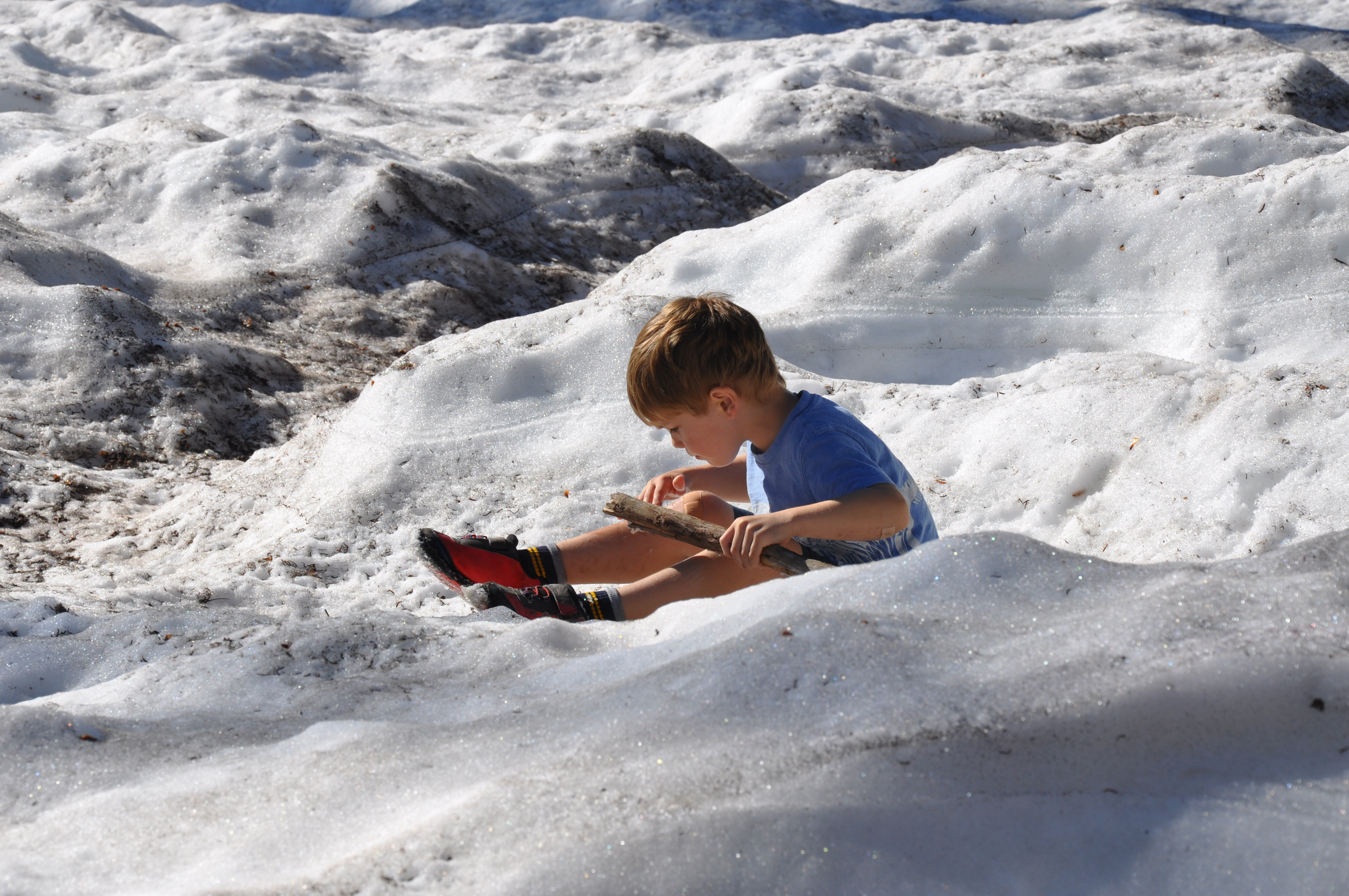
We pushed on farther through the trees, our youngest actually leading the way to find more and more snow (a rare sight for Louisianians). Before we knew it, we had hiked up to the Sierra Club’s Shasta Alpine Lodge at 7,884 feet. The views from here were stunning, with snow blanketing the ground and a fountain of spring water bubbling up for travelers. By the time we made it back down, we had hiked nearly 3.5 miles up and back–a feat for three boys used walking around below sea level! We celebrated our accomplishment with “Gummy Bear Burgers” and “Make Me Want to Cry Garlic Parmesan Fries” from Yaks.
McCloud Falls
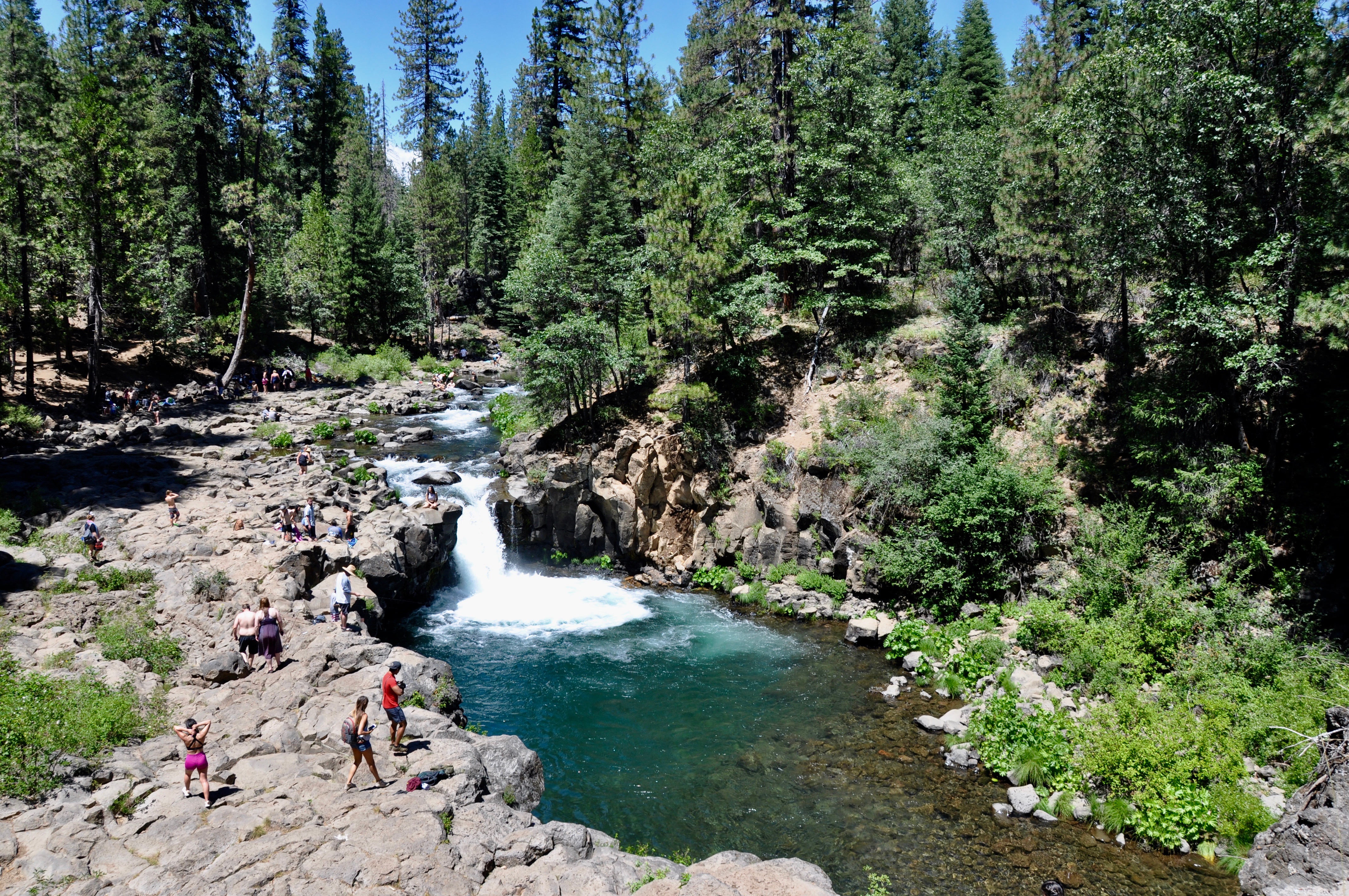
Highway 89 led us past the small town of McCloud, which featured a quaint Main Street complete with an historic inn and an old-fashioned candy store. Nearby McCloud Falls offered three sets of falls – Upper, Middle and Lower – all with separate parking lots or you can hike the 3.5 mile round trip trail between them. Lower Falls (pictured here) was pretty busy, with people swimming, picnicking and fishing all along the clear, cold water. Middle Falls was a short walk to a nice view of the wide, impressive falls, while Upper Falls gushed out between a rock canyon.
Burney Falls
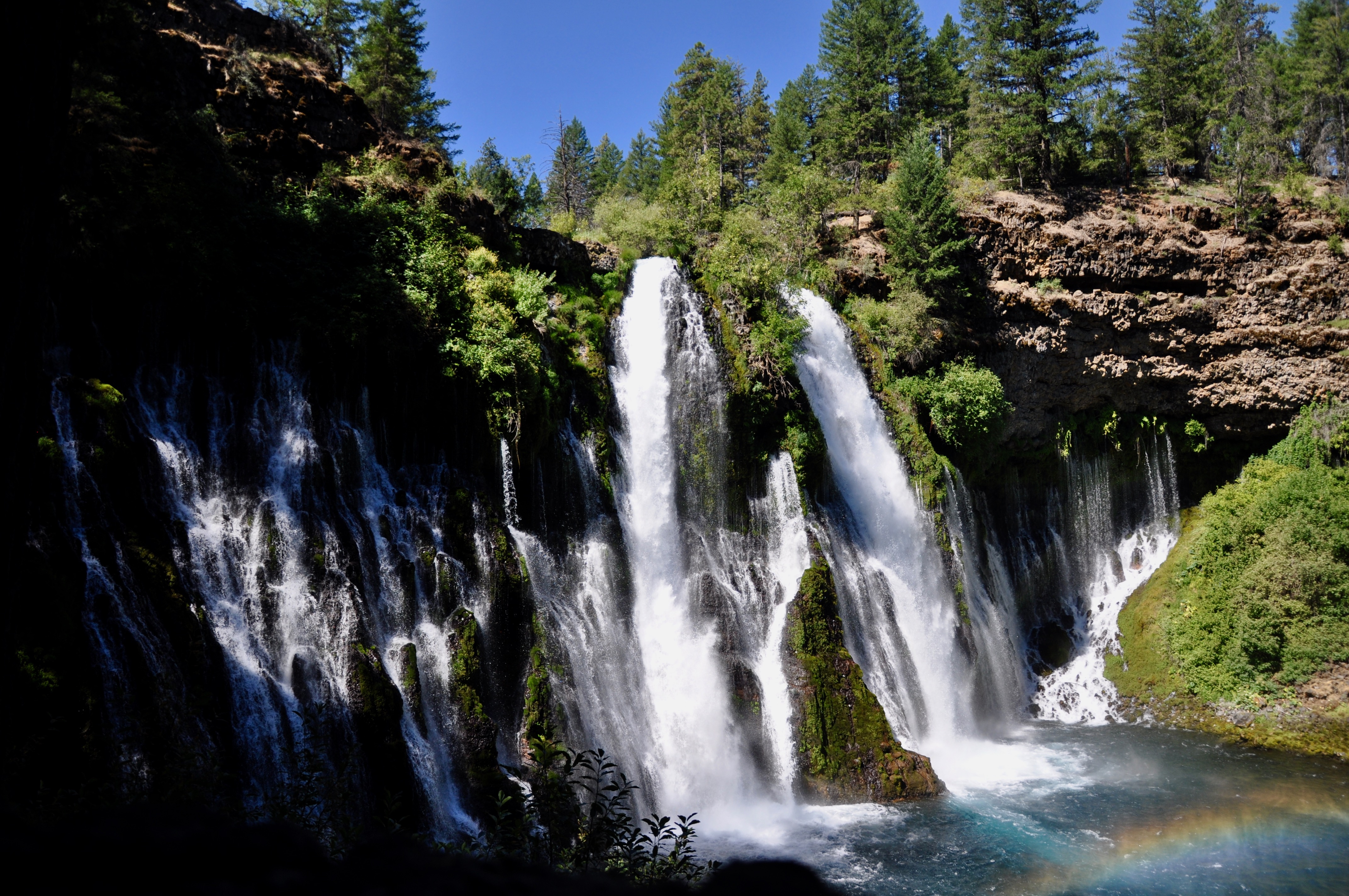
Hands down the most beautiful waterfall in this general area is Burney Falls. A hundred million gallons of water a day flows out of the 129-foot falls, which are so impressive even the kids stopped to stare in awe. Porous, volcanic rock holds much of the water in an underground reservoir, and it then comes back up through springs, feeding into the falls, Temperatures dropped dramatically on the hike down to the waterfall’s base, where we all stood shivering in the mist. Look for the black swifts darting about, often disappearing to their nests behind the falls.
Lassen Volcano
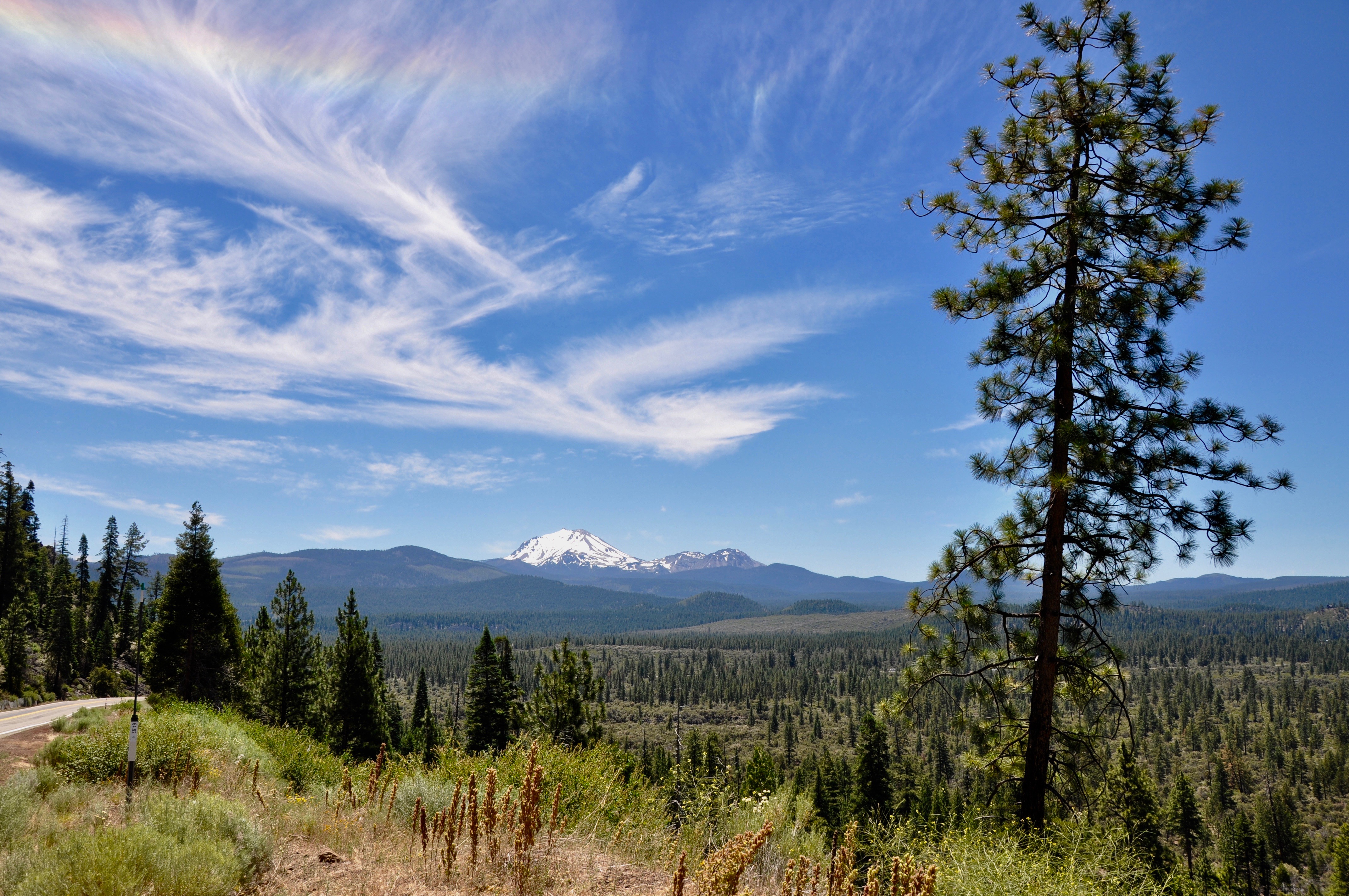
Our last adventure before heading back south to San Francisco was the other-worldly Lassen Volcano. From San Fran, up the coast to the redwoods and across the state to Mt. Shasta, people were everywhere – enjoying the views, the weather and the summer. But Lassen was a different story. Only a handful of cars accompanied us on our drive south, and much of the landscape still reflected the barrenness leftover when Lassen erupted several times between 1914 and 1917.
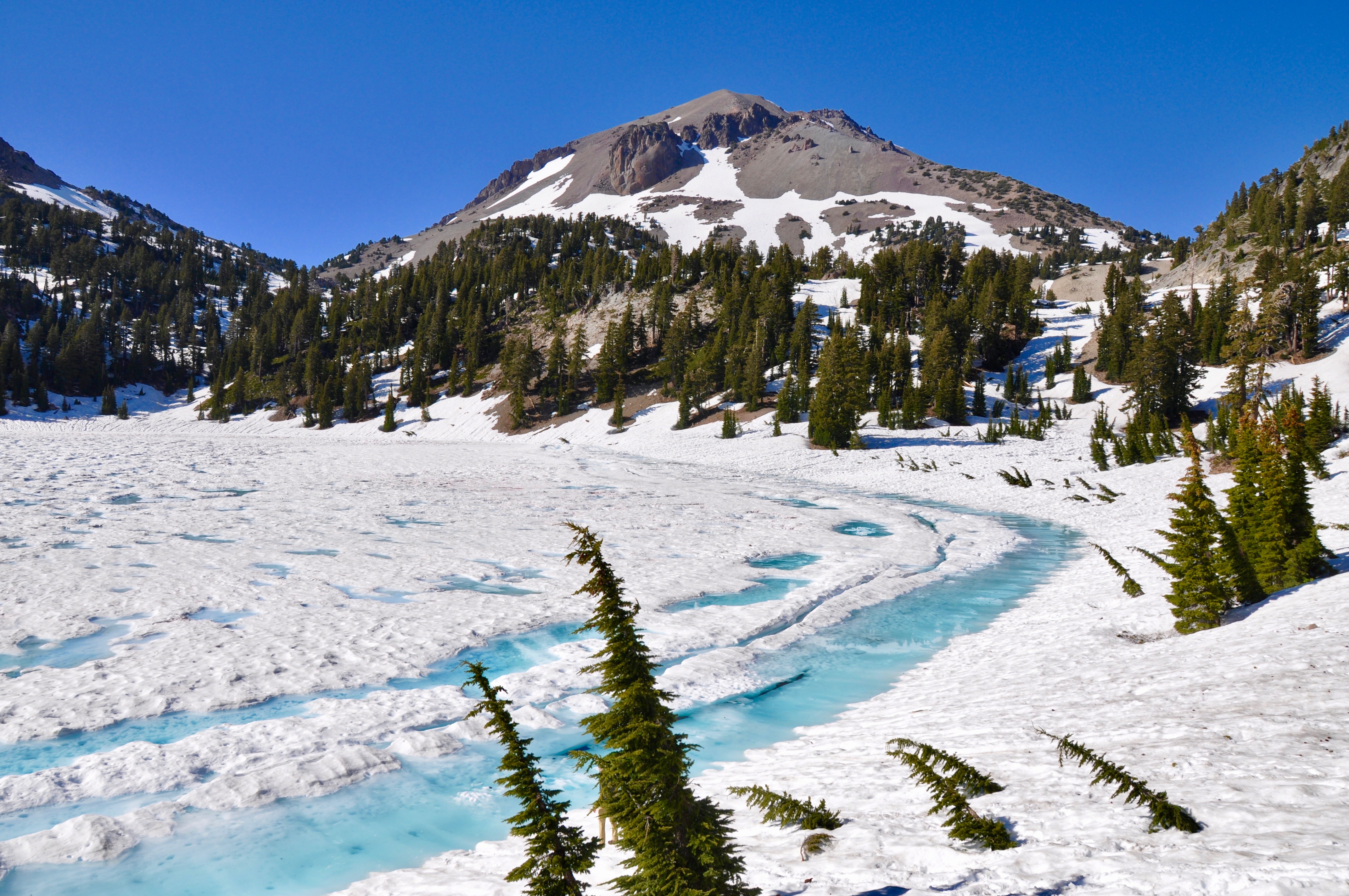
The main road through Lassen is closed much of the year due to heavy snow. Many of the campgrounds are only open June through September. Even in July, our “bathroom stop” at the Lake Helen picnic area revealed only the roof of the bathroom – the rest covered completely in snow. Lake Helen was still frozen over. It was quite a sight for us southerners, who rarely even see snowflakes. In some places, where the roads or parking lots had been plowed, the snow pushed aside stood upwards of 30 feet.
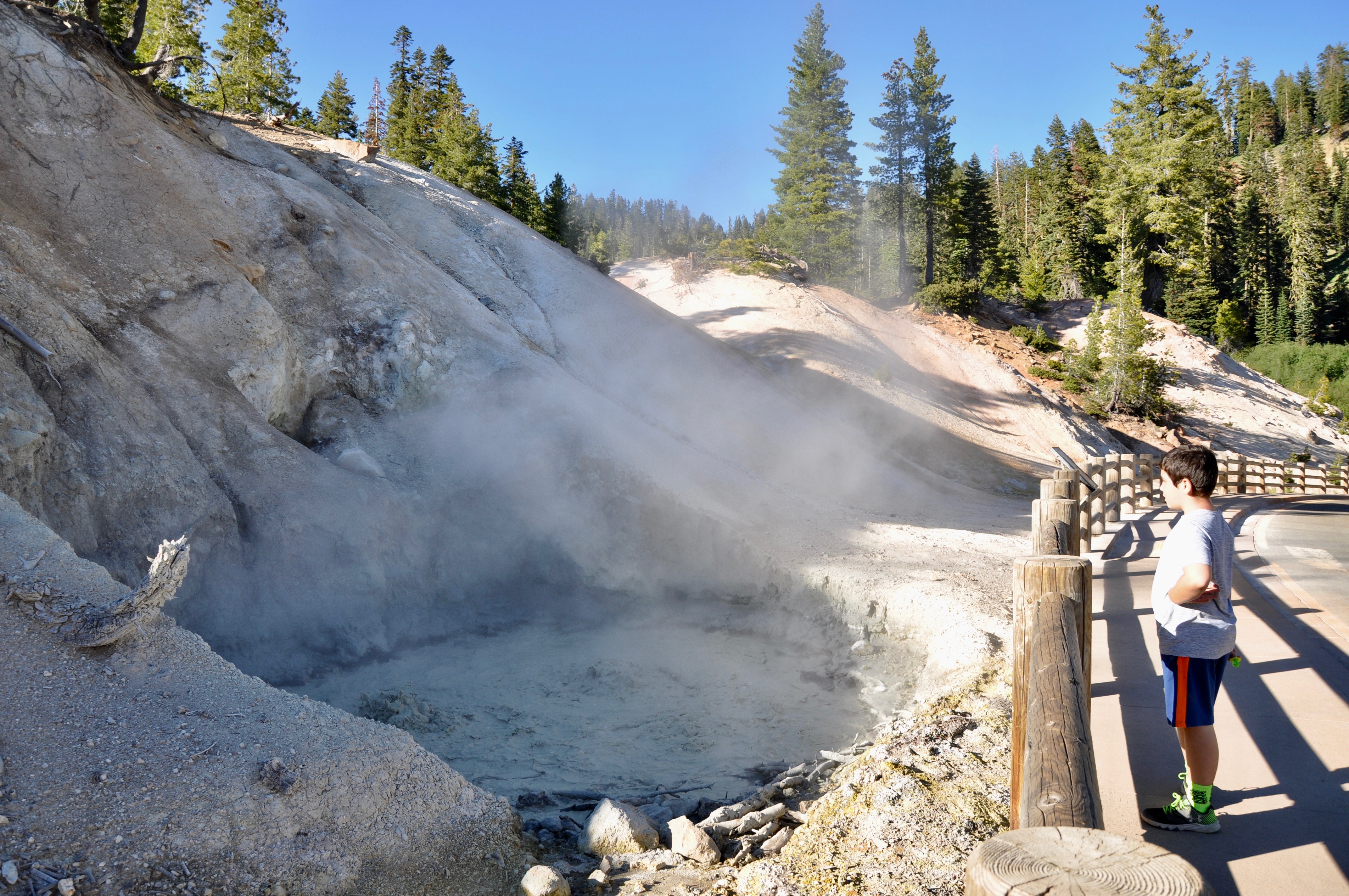
Lassen Volcano is still active, as evidenced by the several hydrothermal areas throughout the park. It’s part of the Cascade Range, which includes Mt. St. Helens and Mt. Rainier. Bumpass Hell is the best known trail for seeing steam vents and boiling pools, but unfortunately it was closed for renovations while we were there. Sulphur Works is just inside the southern entrance to the park and offers easy access to a bubbling mudpot.
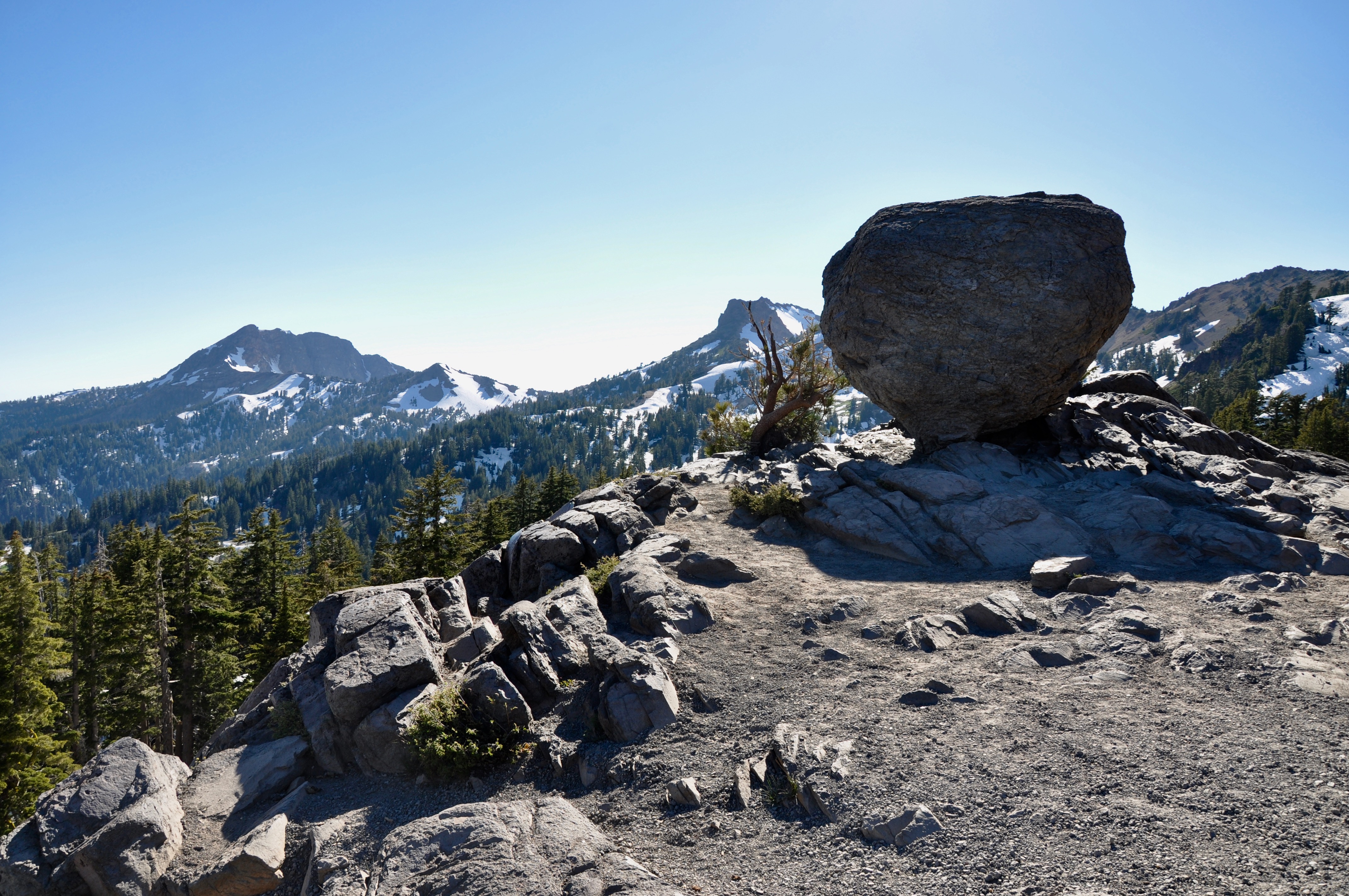

by Kristy Christiansen | Aug 29, 2019 | Beyond the State, California, Featured Posts
After traveling from San Francisco to Eureka, part two of our journey was in northern California’s redwood coast. We spent three nights in McKinleyville, just north of Eureka. This gave us two full days for exploring, and we crammed in as much as possible. Our agenda was divided pretty evenly between California’s redwoods and beaches:
Redwoods
Redwood National and State Parks and Prairie Creek Redwoods State Park blur together on a map. Highway 101 leads through both, and other than separate visitor centers, you wouldn’t notice much of a difference. While printing our booklets for the Redwoods Junior Ranger program, I stumbled upon Redwood EdVentures. It’s more than 20 Quests in various locations throughout the Redwood coast. Each Quest has a map and a series of clues to lead you along a trail. At the end of the trail, kids look for a hidden word. When you bring the word back to the Visitor’s Center, you receive a rather nice patch that can be sewn on a backpack or jacket.
Lady Bird Johnson Trail
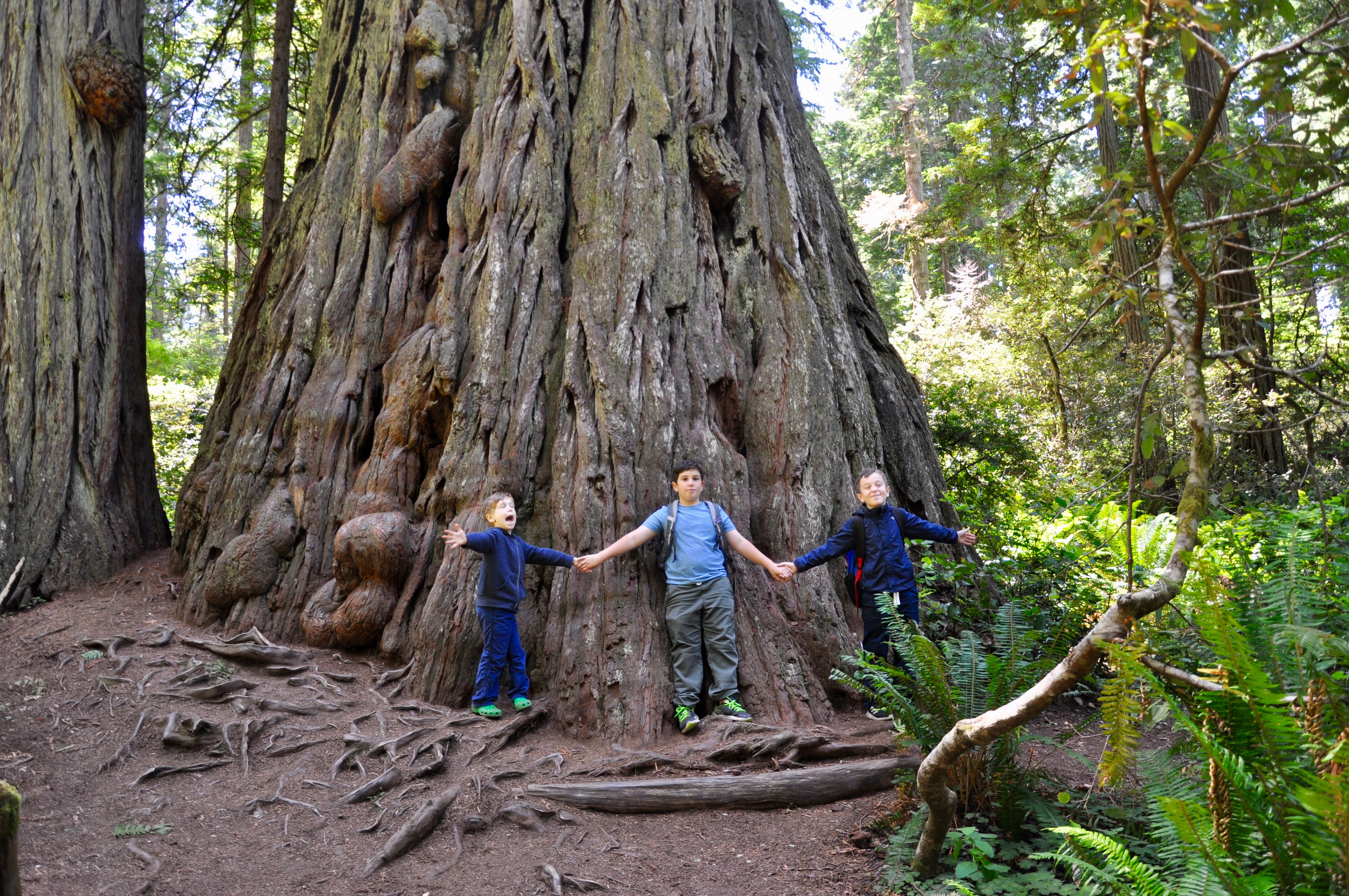
Just north of Orick, turn onto Bald Hills Road to access the Lady Bird Johnson trail. President Nixon dedicated the grove the First Lady in August 1969. Pick up a booklet at the trailhead to learn more about the redwoods along the interpretive trail. There are 13 numbered stops throughout the easy 1.5-mile loop. If you take your time, you’ll find lots of opportunities to step inside trees or gaze upwards at the towering heights.
Prairie Creek Trail
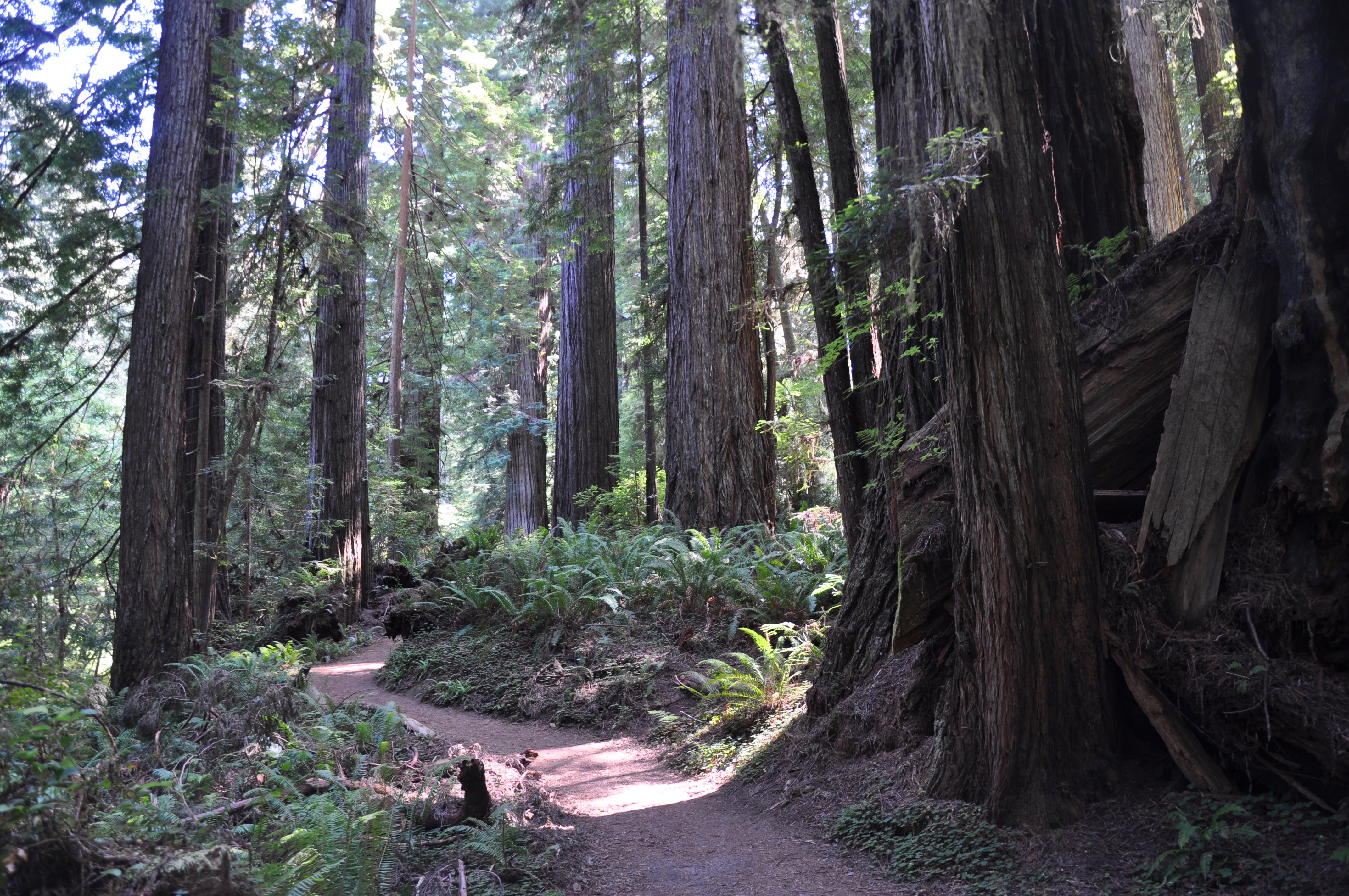
Right outside the Prairie Creek Redwoods State Park Visitor Center is the Prairie Creek trail. This is one of the sites included in the Redwood EdVentures. It’s a beautiful trail, darker and more closed in than the Lady Bird Johnson trail. Prairie Creek winds along beside the redwoods here. The whole loop is 2.5 miles, but if you’re short on time and want to do the EdVentures, you only need to do a 1.5-mile loop to find the clue.
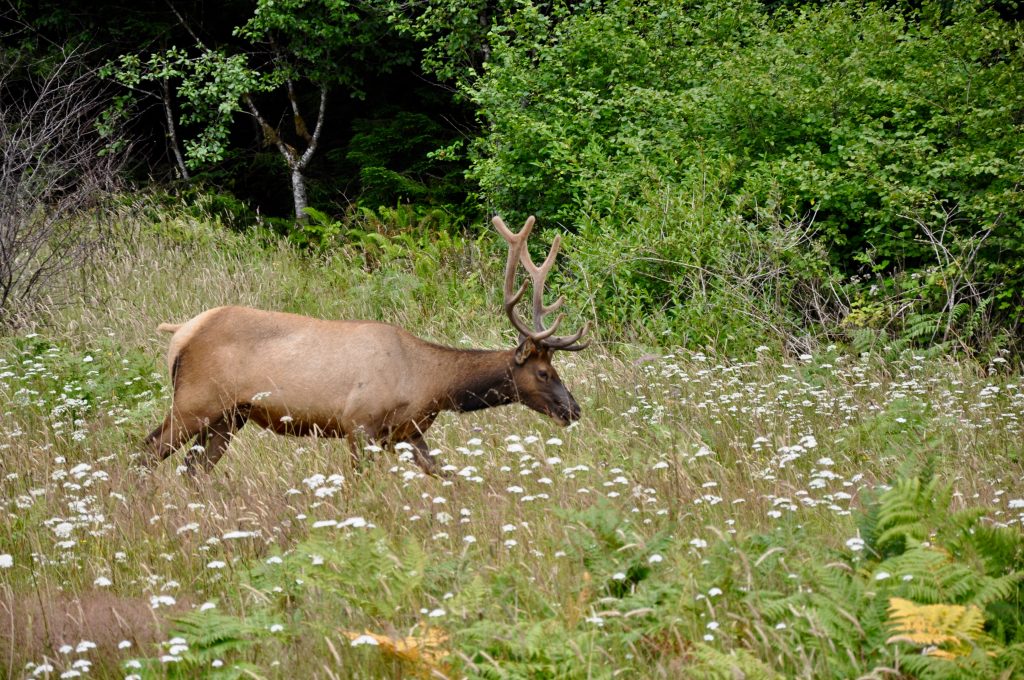
Don’t miss Elk Prairie Meadow outside the Prairie Creek Visitor Center. It’s a great spot for elk watching. We got some close-up views on our way out in the evening. Another highlight of the State Park here is Fern Canyon. Unfortunately, we didn’t have enough time to make it out there, but it’s definitely on the list for next time.
Big Tree Wayside
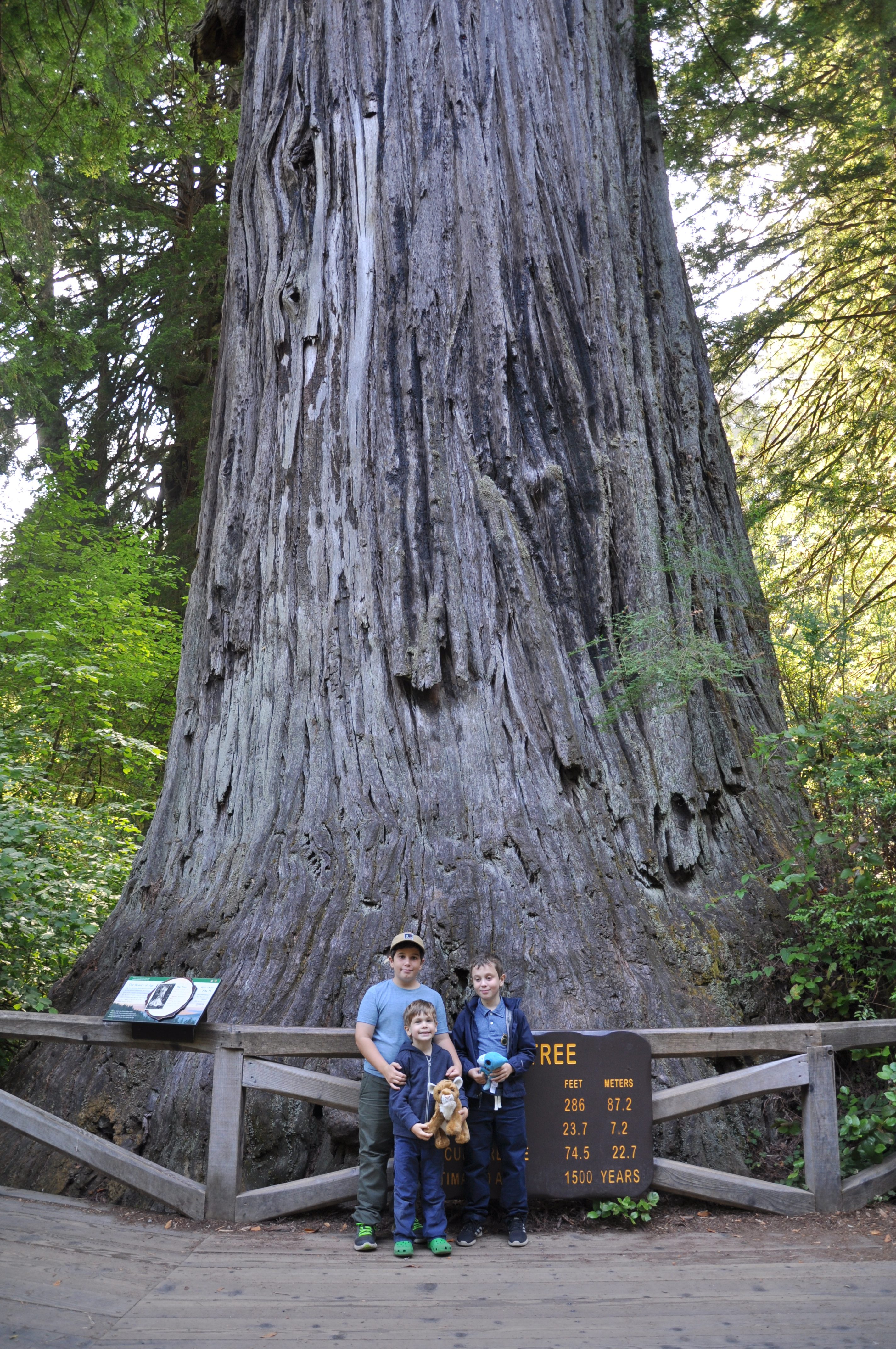
A quick, easy stop is the Big Tree Wayside walk. Only 200 yards from the parking lot, you’ll find the 1,500-year-old behemoth, which stands over 350 feet tall. Short walks from the Big Tree viewing area lead to even larger trees.
Beaches
The advantage of visiting the redwoods is you not only immerse yourself in ancient trees but also get lots of opportunities for rock hunting and ocean viewing.
Agate Beach
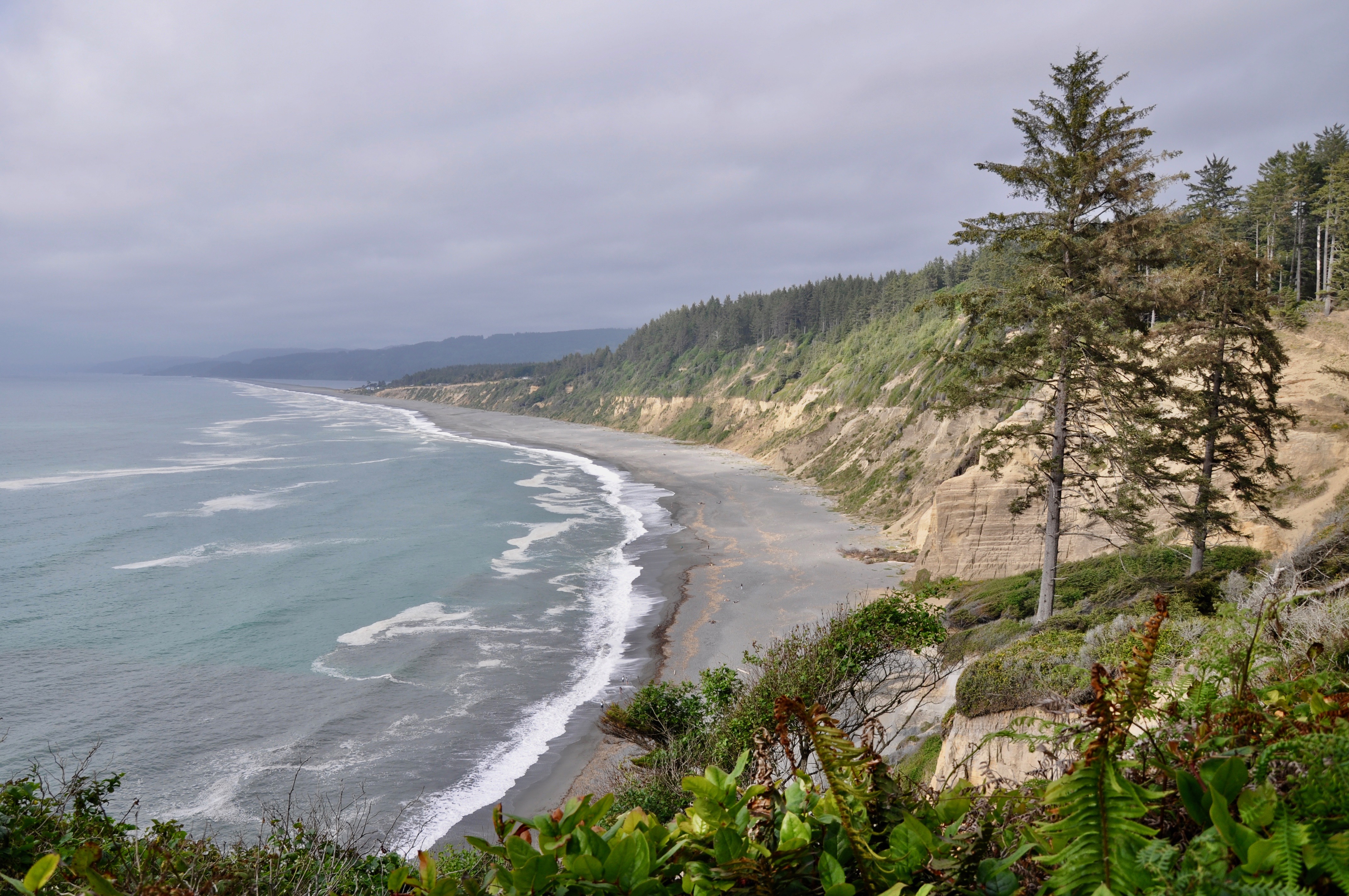
At Patrick’s Point State Park north of Trinidad, a steep cliff-side trail brings you down to Agate Beach. You could arguably spend a whole day here, lying on your stomach, sifting through the rocks in search of agates. We weren’t quite sure what we were looking for at first, but a nearby beachcomber took pity on us and showed us some examples of the translucent gem. While we searched, our youngest built a series of creeks and dams alongside a trapped tidepool. It was one of our favorite spots, and we practically had to drag the boys away.
Ferndale & Centerville Beach

After seeing the advertisements for the Victorian village of Ferndale, we decided to give it a shot. A quaint town with an active Main Street, Ferndale was definitely a hidden gem. Every home and building in town seems to be both architecturally beautiful and historical, and in fact, the entire town is a California Historical Landmark. Our first stop in any small town is always the local bookstore, in this case, Chapman’s Bookery. We searched the guide books and kid’s books sections, excited to find The World of the Wazzlewoods by Tyrel Bramwell, a kid’s chapter book set in Ferndale.
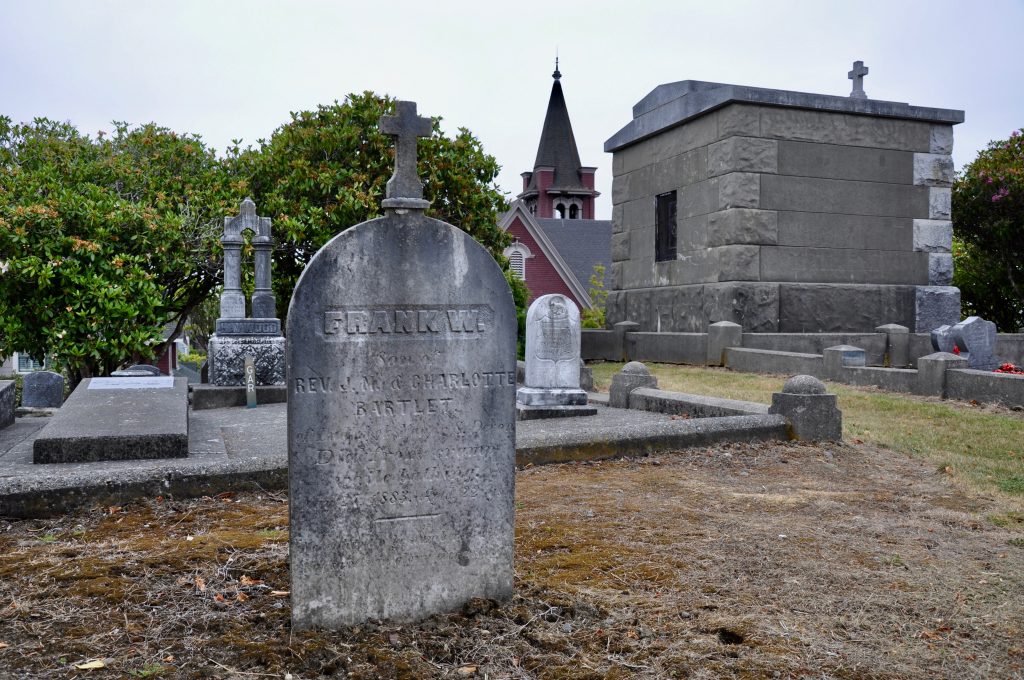
Besides knowing a lot about books, booksellers are generally a great resource for recommending the top sights to hit in the area. This one was no exception, pointing us toward the historic cemetery, which rests on a hill at the edge of town. Some of the graves here date back to the 1800s. Also be sure to check out Golden Gait Mercantile, where I could have spent my paycheck on kitchen gadgets, but ended up settling for some old-fashioned candy.

Centerville Beach was a 10-minute drive out of town, down a nearly deserted road through farmland. We questioned our directions until the road brought us right up to the sand’s edge. There were quite a few fireworks remains left over from July 4 celebrations, but after we walked down the beach a ways, the area looked more pristine. We practically had the sand and surf to ourselves, as very few people had ventured out today. We were drawn to the huge cliff south of where we had parked and spent much of the afternoon walking along its base and searching for colorful rocks.
Eureka and Moonstone Beach
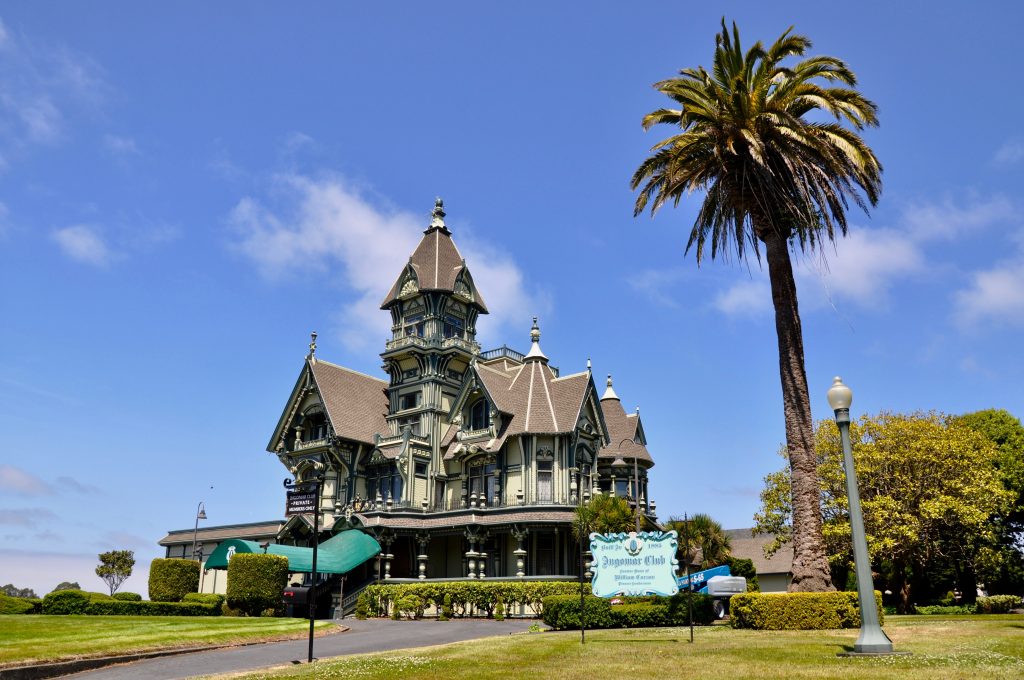
On our way back north, we took Waterfront Drive through Eureka, stopping to gaze at Table Bluff Lighthouse and the Fisherman Memorial on Woodley Island across the channel. At the end of 2nd Street, we ran into Carson Mansion, a stunning Victorian mansion built in 1885. Today it houses the private Ingomar Club.
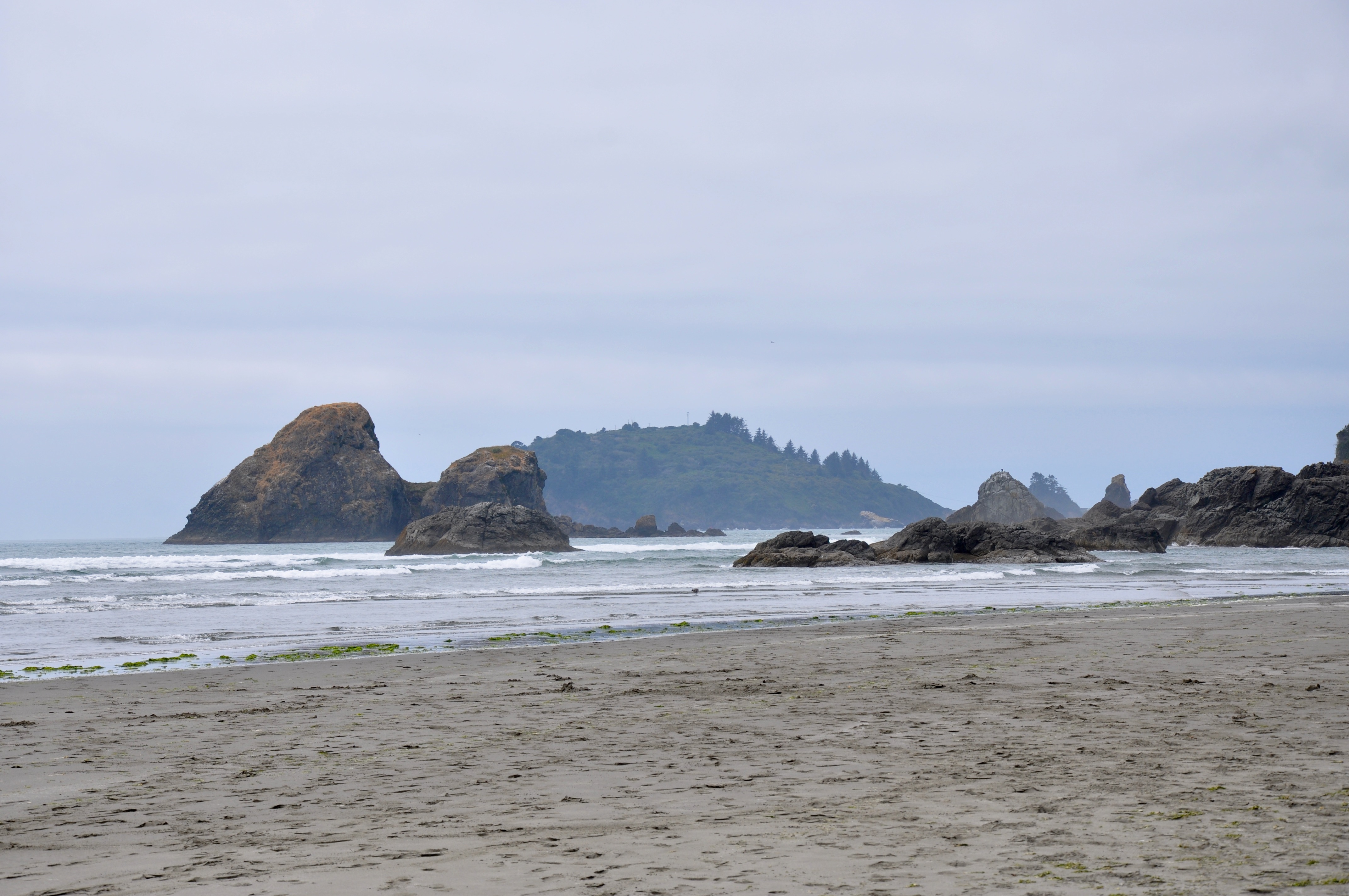
Continuing on, we took a chance at Moonstone Beach. Like all the others, it was beautiful, with Little River flowing through the center of it right out to the ocean. But don’t be fooled by the name. There are no moonstones here. However, on the north end, we discovered a small waterfall spilling from the cliff into the sand and small caves for exploring. It was the perfect spot for three boys to let their imaginations run wild.
Trinidad Beach
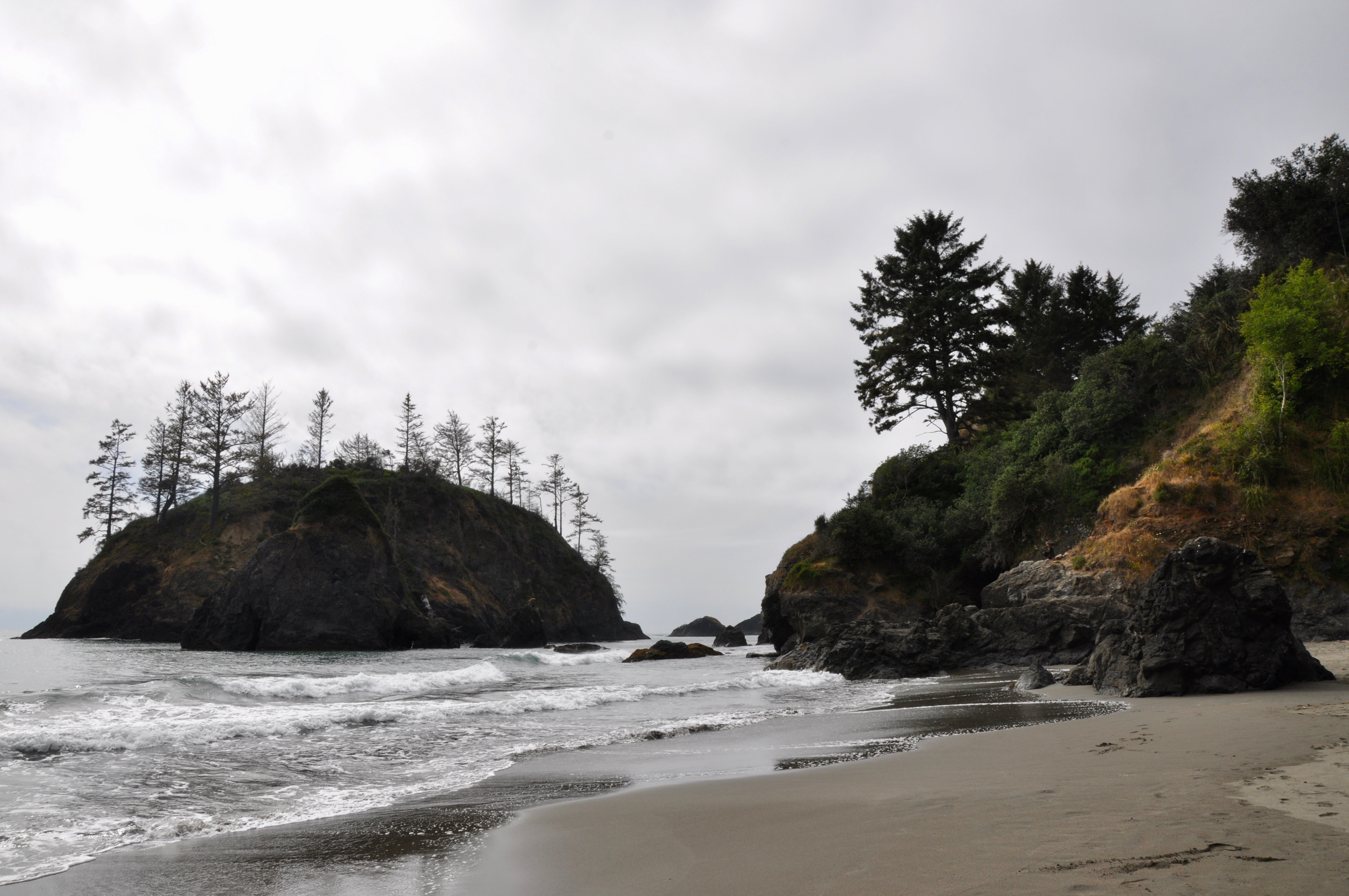
Our last pull off for the day was at Trinidad Beach, just off the parking lot at the end of Lighthouse Road. To the north, the view of the rock outcroppings here was worth the stop. But the kids loved their “secret tunnel” on the south side, where they built a fort out of driftwood and searched for fossils along the base of the rocks. It was their own private hideout tucked away out of sight from the rest of the beachgoers.
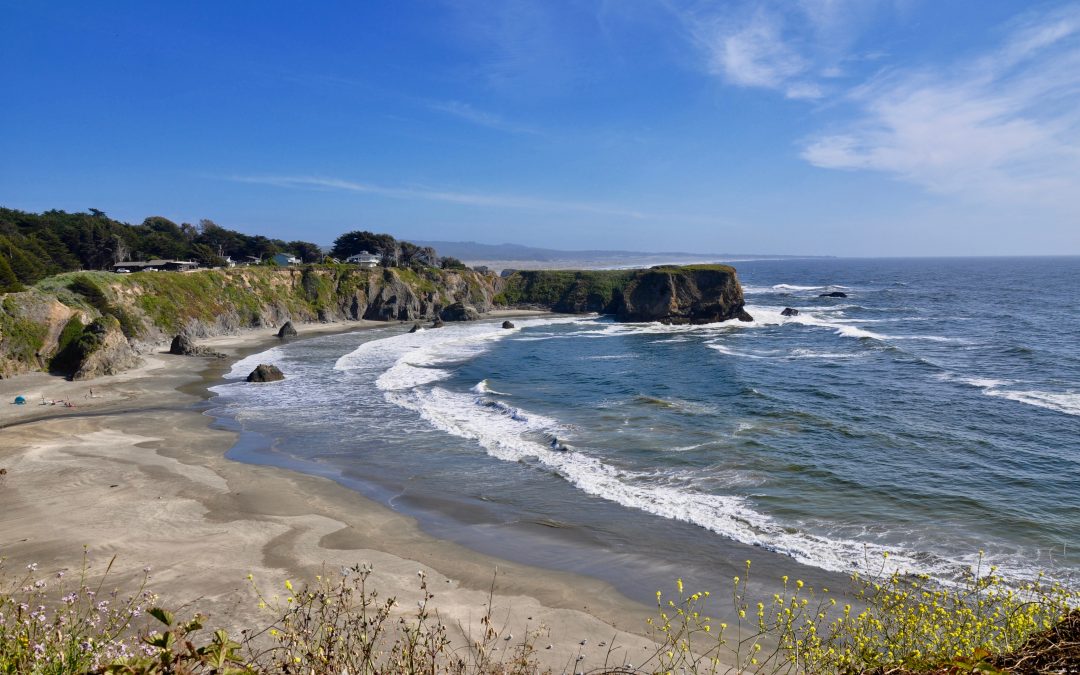
by Kristy Christiansen | Aug 16, 2019 | California, Featured Posts
Our most recent summer destination was northern California. After a terrifying flight and unexpected landing in Colorado, we finally made it to San Francisco. Glad to be on land again and anxious to begin our ten-day driving tour, we threw the bags and kids in the rental and took off. We had 10 days to drive a loop from San Francisco north to the Redwoods, east to Mt. Shasta and then back south through Lassen Volcano. It was a whirlwind tour, with probably enough content for a whole book! But I’ll give you the abbreviated highlights from our favorite parts of the trip. Here is our leg along the northern California coast:
Baker Beach

As this was our third trip to San Francisco, we only allotted two days in and around the city – our first and last days. This was just enough time to hit our favorite spots, starting with Baker Beach. On a Friday after lunch, the parking lot and beach were packed to capacity. Kids in bathing suits were playing in the sand and dipping their toes in the frigid water. Being from the South and used to much warmer weather, we shivered in our jeans and jackets. But we didn’t come here to go swimming. Besides the cold, the waves are pretty rough. We came here for the photo op. It’s one of the best places to capture a shot of the Golden Gate Bridge. Besides, it gave our five-year-old some much needed time to run around and dig in the sand.
The Pelican Inn
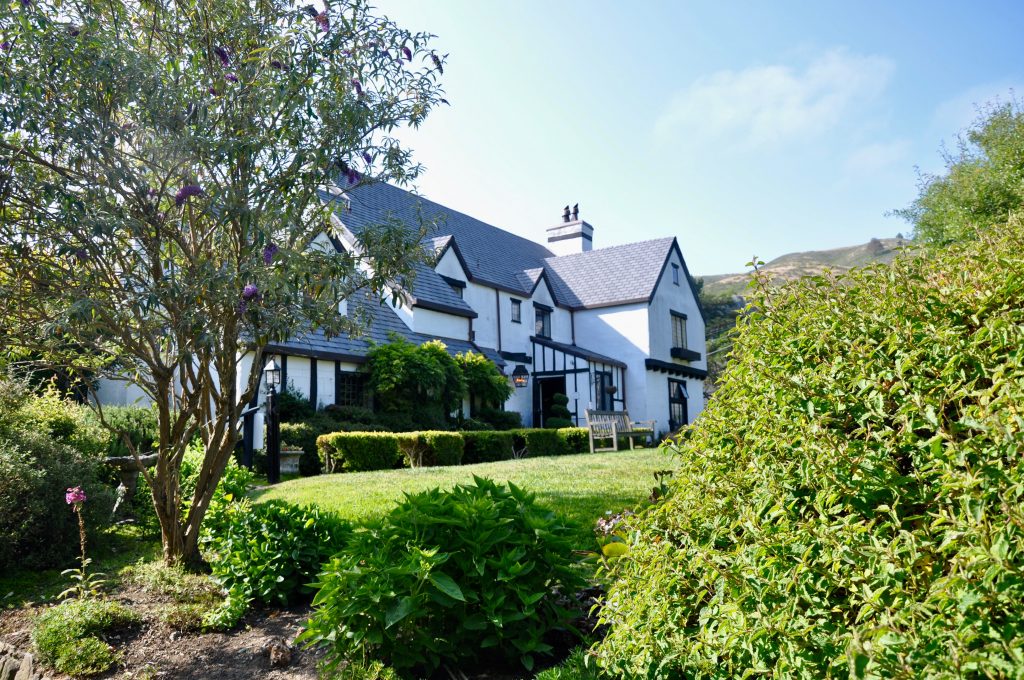
We had a little time before our 6 p.m. parking appointment at Muir Woods. (Yes, in case you haven’t heard, you now need to schedule a time to visit Muir Woods and either reserve a parking spot or a shuttle.) So with time to kill and dinner on our minds, we swung by The Pelican Inn for fish & chips and an English dip sandwich. In between bites, the kids chased birds around the garden, and we watched horses trotting down the road, probably taking their riders to nearby Muir Beach.
Muir Woods National Monument
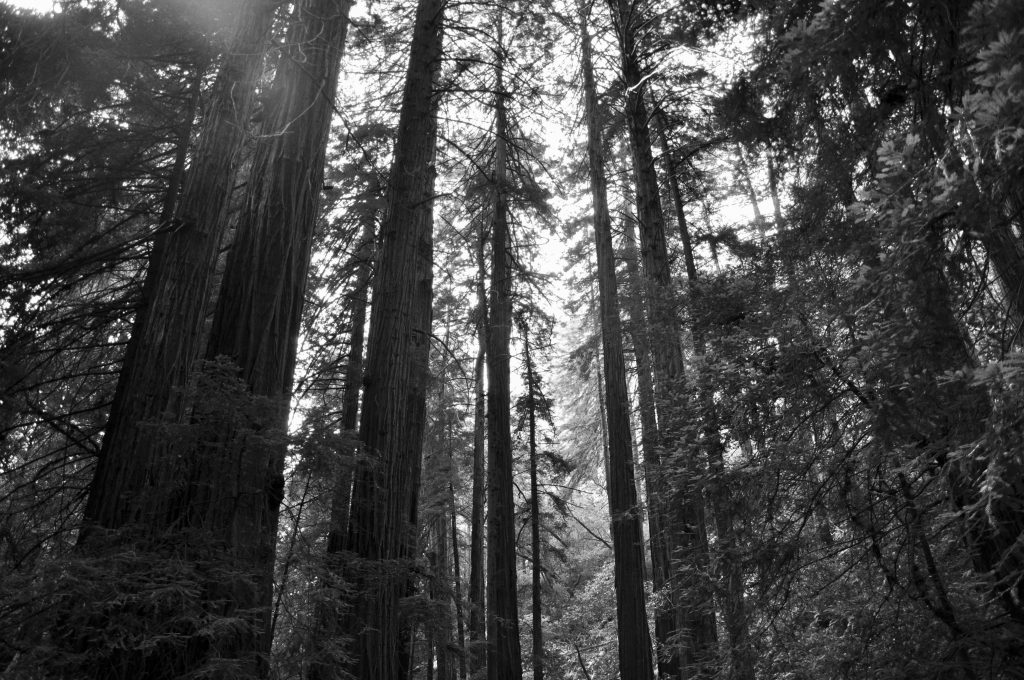
Next up was Muir Woods National Monument. It’s a great, brief introduction to the redwoods before viewing the giants up north. I originally was bummed to get such a late time slot at Muir Woods, but it turned out to be a blessing in disguise. The national monument is open until 8 p.m. during the summer and normally packed. When we arrived, we got a parking spot right up front and practically had the place to ourselves. It’s hard to really experience nature when you’re surrounded by people, so this was perfect. I had printed Junior Ranger booklets back in New Orleans, so armed with their packets and pencils, we stepped into the woods.
As close as Muir Woods is to bustling San Francisco, it feels like you’re worlds apart. The main trail is straight in and out, about an hour and half if you go to the end and back. It’s nicely paved, each side of the trail flanking a stream running down the middle. With the redwoods towering above us, we felt very small next to the tallest living things in the world. As the light dimmed, we finished our hike, and Park Rangers swore the kids in as the newest Junior Rangers.
Muir Beach
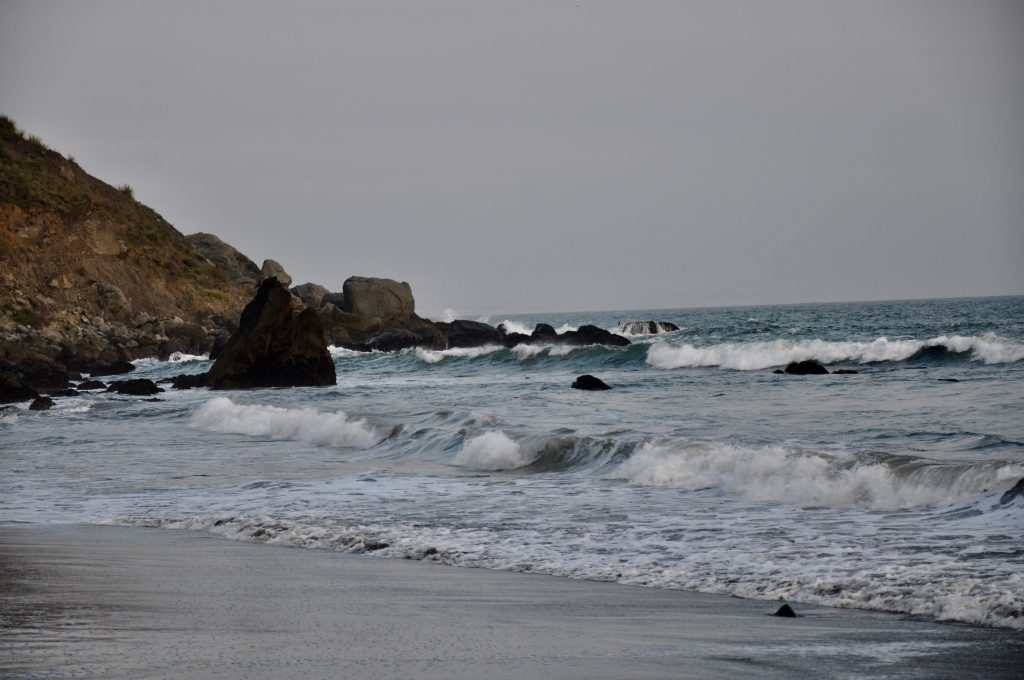
On our way out, we stopped by Muir Beach. It was a short trail down to the water, where groups of kids were huddled around bonfires. Hoards of pelicans flew overhead. My oldest counted over 500 before we finally dragged them away. We still needed to make it to Petaluma for the night.
Luther Burbank Home & Gardens
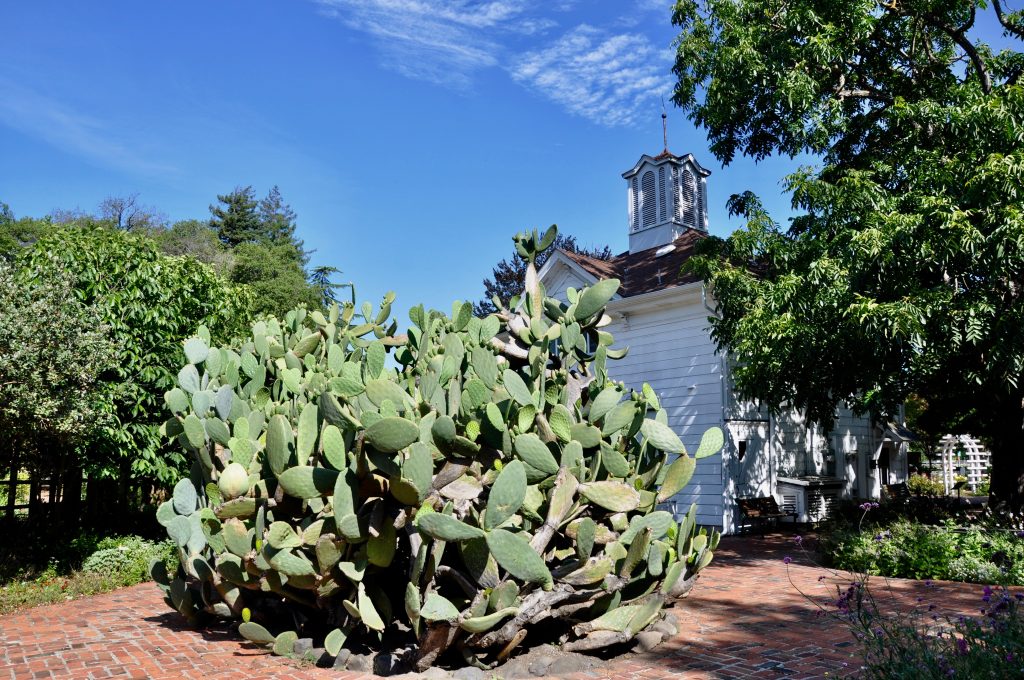
The Pelican Inn was our one splurge on eating out, but now we had to get serious about food. Finding a Trader Joe’s in Santa Rosa, we picked up breakfast and plenty of road trip snacks and had a little picnic at Luther Burbank Home and Gardens. It was early morning, and our only company was the groundskeeper, who welcomed us to enjoy the gardens. Luther Burbank had a 50-year career as a horticulturist, developing many new plants throughout his life. My husband, Paul, is an avid gardener himself. Our little patch of land in New Orleans is exploding with colors and hundreds of plants. And his pride and joy is his spineless cactus, created by none other than Luther Burbank. (It’s also a favorite snack for our red-footed tortoise!)
We couldn’t stay long, though, as we needed to make it all the way past Eureka before nightfall – with several stops planned along the way… Here are some of our favorites:
Hwy. 1 Beaches & Ocean Views
Navarro Point

Driving west from Cloverdale along Hwy. 128, the road winds past small vineyards tucked away in hidden hills. You then pass through Navarro River Redwoods State Park, where for 11 miles, second growth redwoods crowd right next to the highway. And then it opens up to Hwy. 1, and the Pacific Ocean glistens before you. We parked at Navarro Point Preserve and hiked the trail through the wildflowers. The reward was expansive ocean views high atop a cliff, with sea lions playing on the rocks below us.
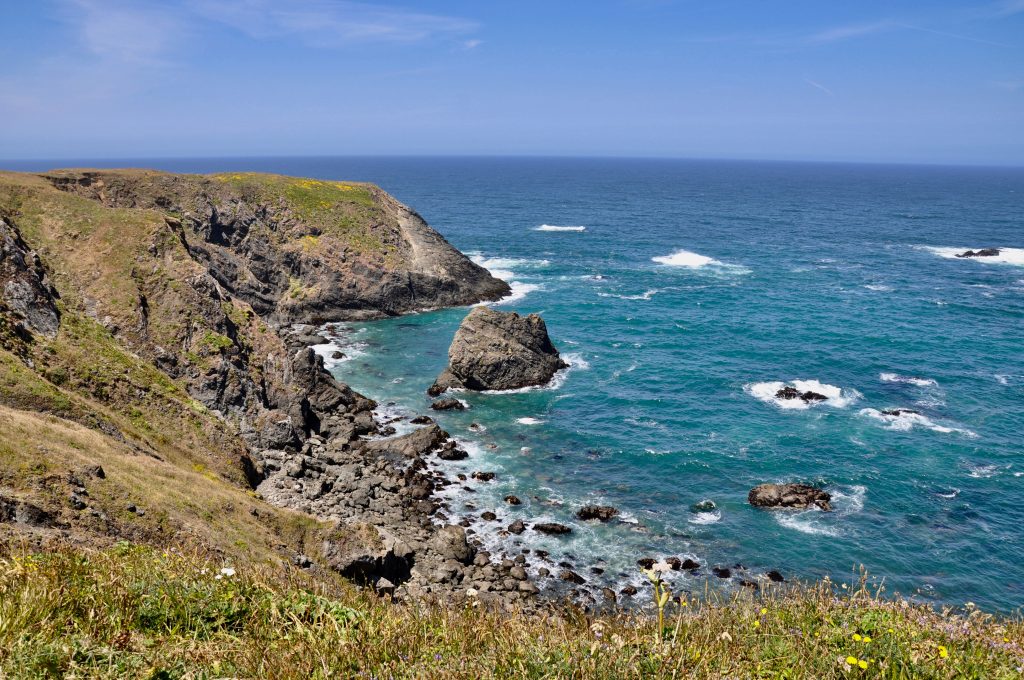
MacKerricher State Park
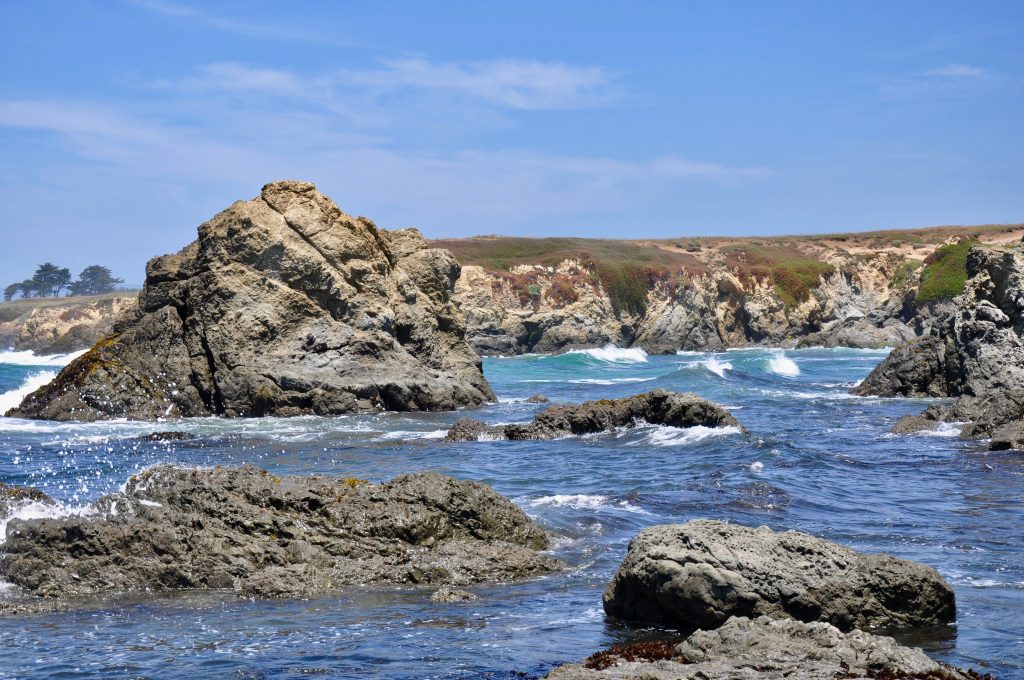
In Fort Bragg, MacKerricher State Park manages nine miles of the coastline. Highly popular Glass Beach was once a dump site following the 1906 great earthquake. Apparently the townspeople hoped that the trash would wash away, but instead the stubborn ocean kept washing it back on the beach. A hundred years later, all that remains are the handfuls of colorful sea glass littering the beach. Take all the pictures you like, but as this is a state park, you’re not allowed to leave with any glass.

At the main entrance to MacKerricher, visitors are greeted by an impressive whale skeleton. The road brings you around to the beach and a trail to Laguna Point. The seal watching station here offered one of the best views of both harbor seals and sea lions lounging on the rocks before us.

Hwy. 1 north from Fort Bragg offered breathtaking views of the Pacific Ocean around every turn. The road then turned inland back to Hwy. 101. Much of this stretch – 31 miles – is mirrored by the Avenue of the Giants. We had driven this route years before, but unfortunately there wasn’t enough time to take it again. Our Airbnb in McKinleyville awaited. It was indeed a “Charming Farm Barn Loft,” and anyone traveling in the area should check it out.
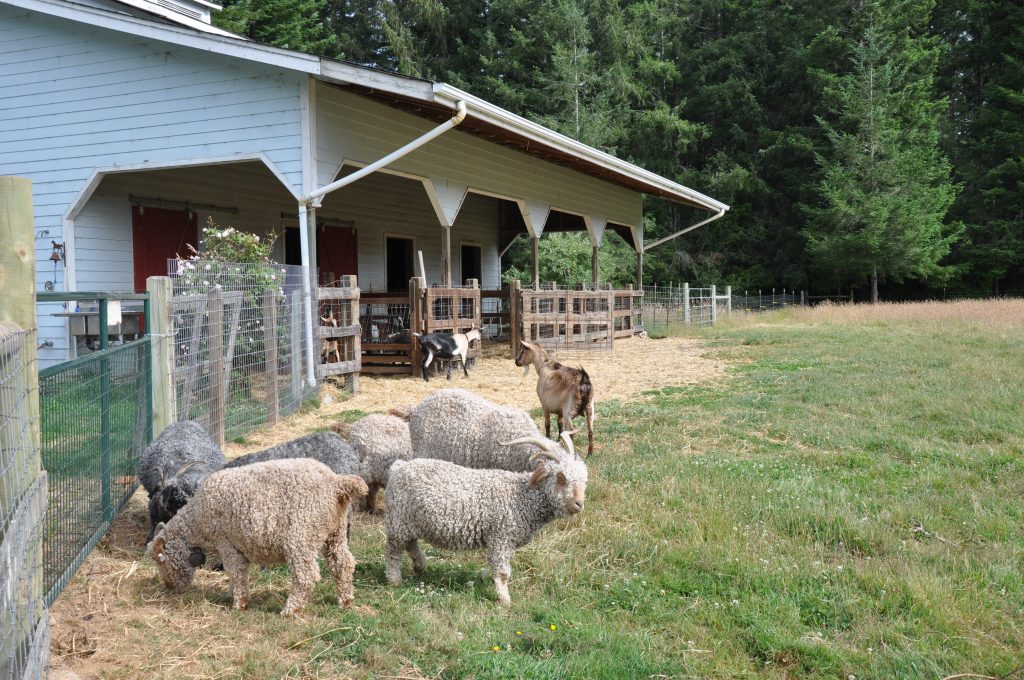

by Kristy Christiansen | Jun 26, 2019 | Arkansas, Beyond the State
When the invitation arrived to my nephew’s wedding in rural Arkansas, we immediately decided to extend our stay and do some exploring. We booked a little cabin in Gaither, just north of the Buffalo National River where cattle seemed to outnumber the people. It was a great location, though, for a quick drive to several of the river’s access points. The Buffalo, America’s first national river, runs wild and undammed for 135 miles. Much of it is dominated by large bluffs, a beautiful backdrop to the river itself. It was May, and the weather here was already sweltering. But the water was cool and refreshing. The kids played for hours by the shallow edge and fished in the deeper waters by the bluff.
Eden Falls
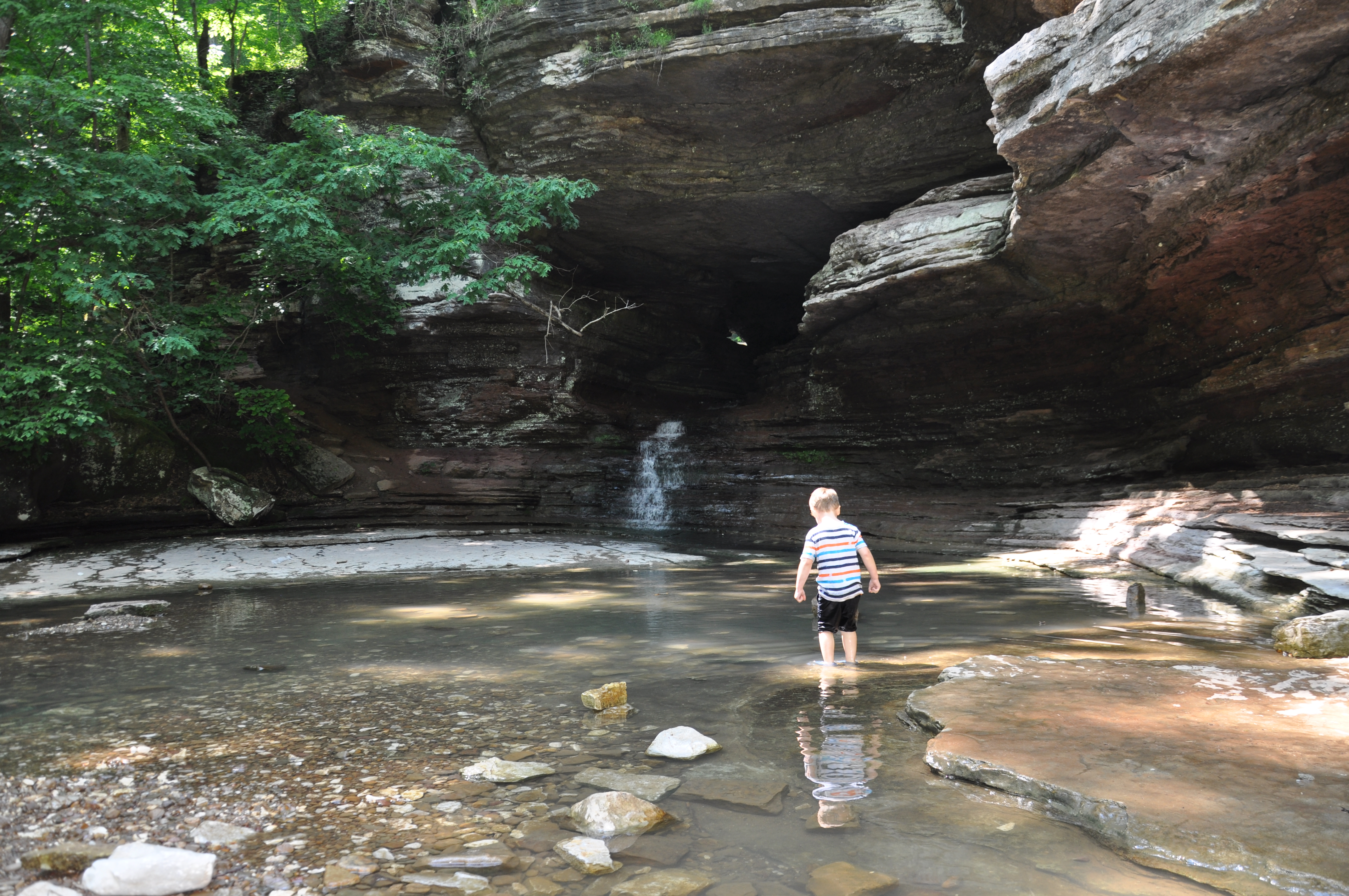
We started on the west side of the river in Lost Valley, taking a short 2-mile round trip hike to Eden Falls. About halfway to the falls, we came to Natural Bridge, where a small waterfall fell into a shallow pool (pictured above). The boys immediately threw off their shoes and splashed in the water. The rocks here were very slippery. We had a few falls and bruises, but it didn’t deter from the fun.

Continuing on, we passed some great boulders for climbing on our way to Cob Cave, so named from the corn cobs left behind by Native Americans and later found here by archaeologists. It’s a large bluff shelter—a good spot to hide from the rain and with many nooks and crannies for exploring. The shelter leads you on to 53-foot-high Eden Falls. It was not more than a trickle when we visited, but grows in size after a good rain. My husband and our oldest son continued up the hill to another small cave (flashlights needed) and an indoor waterfall. Meanwhile, the rest of us sat by the deep pool at the bottom of Eden Falls, watching a rather large salamander make his way across the rocks.
Blanchard Springs Caverns

Nearly a two-hour drive from our Airbnb in Gaither, Blanchard Springs Caverns was definitely worth the time in the car. We booked the one-hour Dripstone tour. We had time to kill before the tour started, so we took a short drive and small hike to Blanchard Springs. Here the water gushes out of a large crack in a rock wall, forming a creek that eventually flows to Mirror Lake. In our race back to the caverns to make our tour slot, our oldest fell off the path and rolled down the bumpy hillside to the creek below. Fortunately, he came out fairly unscathed, but soaking wet. And with the average temperature in the caverns being at 58 degrees, we had to make a quick detour by the gift shop for some dry clothes.

The tour begins with everyone piling into an elevator and heading deep underground. This trail goes through two of the large, upper rooms of the cavern, and every curve of the path revealed new formations. Some were so massive, you couldn’t quite understand their size until you were standing right next to them. And then others were so slight, you felt like if you breathed on them, they would break in half. The whole experience is rather unreal. Imagine walking through an underground castle built by nature over thousand of years—one drip at a time.
Roark Bluff & Triple Falls
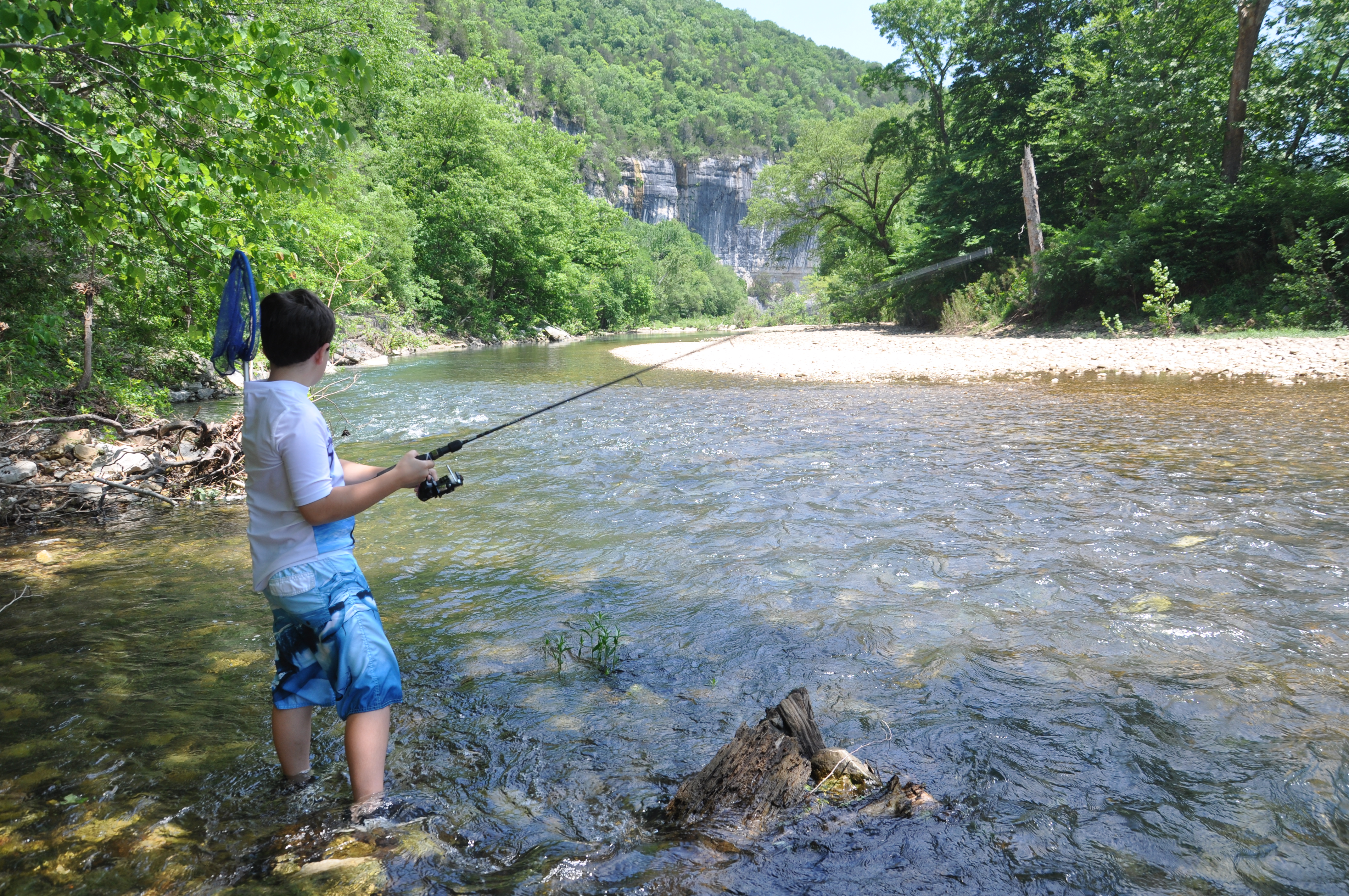
The next morning, we awoke with the Buffalo calling us back. We headed toward Ponca and Steel Creek Campground, pulling the fishing poles out for a morning in the river under the shadow of Roark Bluff. Besides the fish, we had quite a few animal encounters here, including crawfish and several snakes winding their way across the water.
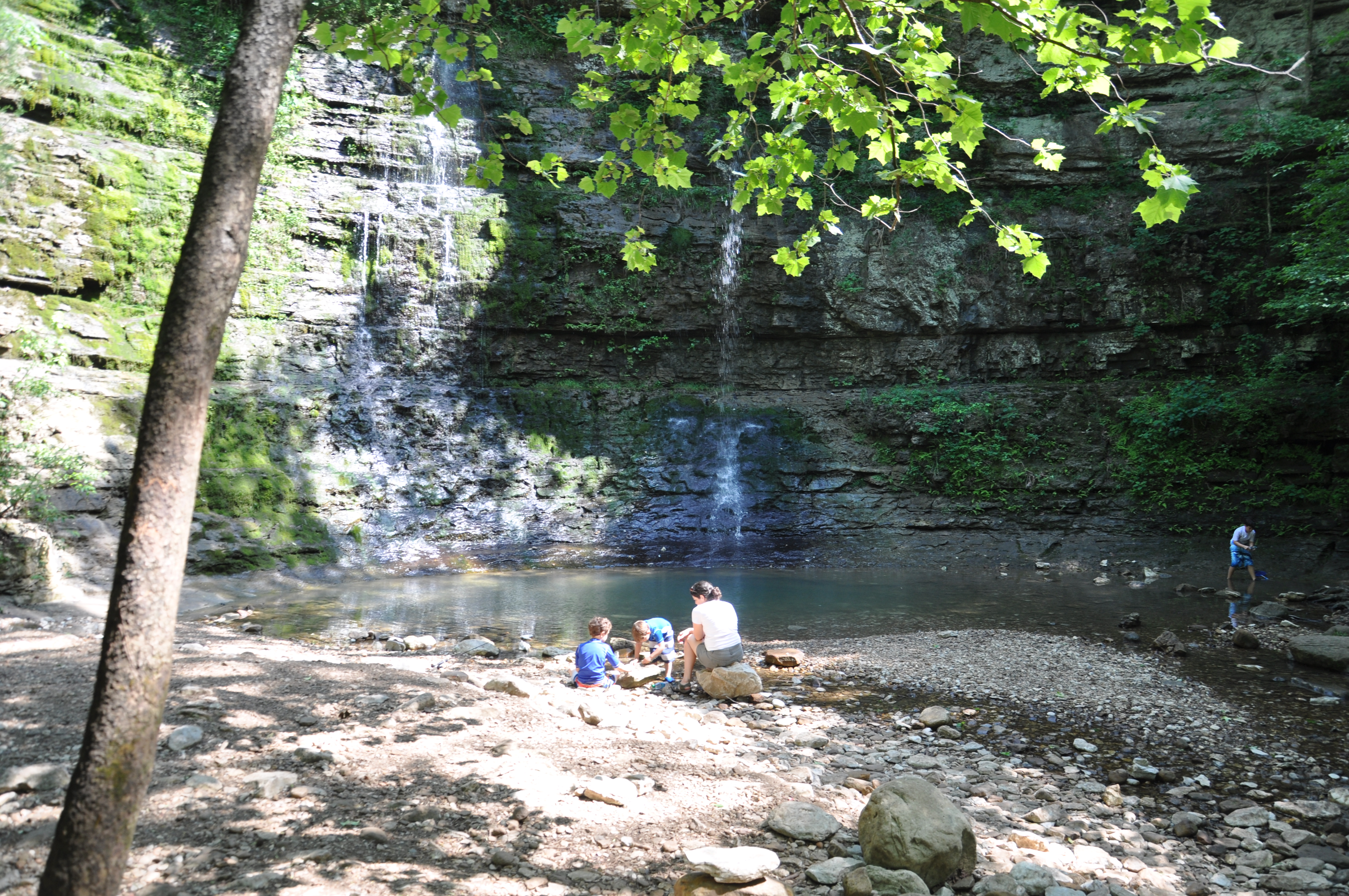
Then we took the dirt road down to Kyles Landing, another canoe launch and camping site. We couldn’t help but drive up the road to Camp Orr, a boy scout camp featured in Boys’ Life Magazine. We figured with an Eagle Scout and two boy scouts in the car, we were cleared for a quick peak! After sneaking out, we stopped at the bottom of the hill near the trailhead for Triple Falls. Turning our backs on the Buffalo, we hiked inland toward Triple Falls (also known as Twin Falls). There’s some impressive shots of this waterfall cascading over the top of the bluff after a nice rain, but alas, we saw a much smaller waterfall. But the area was completely secluded, perfect for a picnic, and ripe for exploring. And, it turns out, there were fish in that pool, which the kids worked for hours to try and catch.
Eureka Springs

Breaking away from the Buffalo, we took a day trip to Eureka Springs—the aptly named town boasting 66 natural springs within city limits. Fifteen of them are located throughout the historic district. Each one is tucked away within a beautiful pocket park. We drove the trolley route around the historic loop, stopping to take countless pictures of the Victorian homes and gurgling springs. The terrain is very hilly here, and the roads snake over and around the hills. We stopped high on a hilltop for lunch at the Crescent Hotel. The hotel opened in 1886 to cater to tourists visiting Eureka Springs for the town’s healing waters. The Sky Bar Gourmet Pizza restaurant not only left us with full bellies, but a bird’s eye view of the city below. The boys were a bit nervous walking the hallways, though, as the Crescent is often dubbed “America’s Most Haunted Hotel.”

Continuing on the loop, we parked by the Carnegie Library on Spring Street and burned off some calories by walking downhill toward Main. The shops here line both sides of the street. We took our time window shopping, stopping to buy some books and, of course, in the candy shop. Yes, those are candy necklaces they’ve got around their necks!
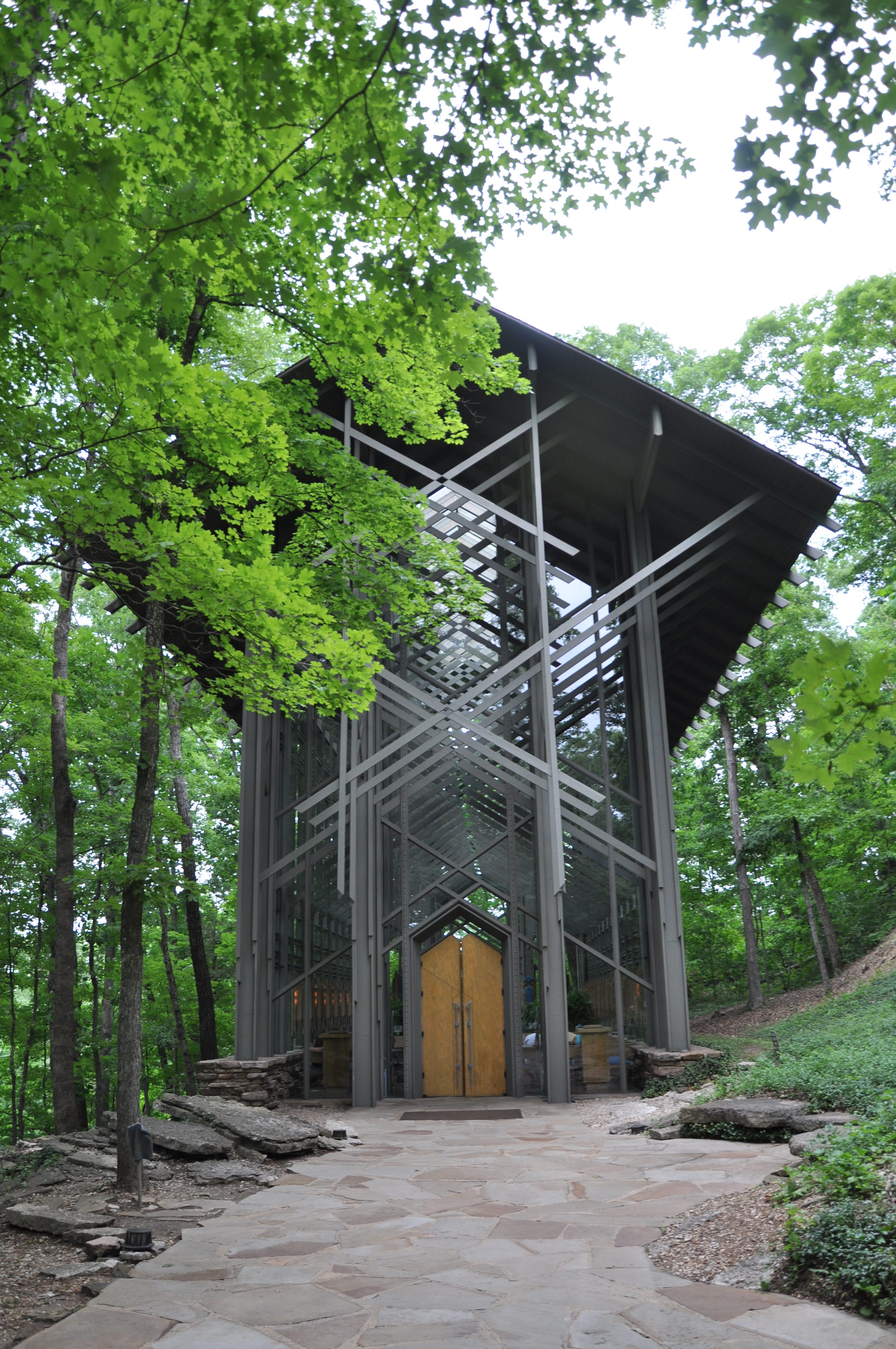
We couldn’t leave without visiting Thorncrown Chapel. Surrounded by woods, this beautiful chapel has “425 windows and over 6,000 square feet of glass.” It’s truly an amazing piece of architecture, and worth the detour if you are in the area.
One Last Look at the Buffalo







